434 papers:
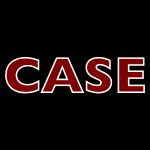 CASE-2015-ZhangTYL #assessment #markov #reliability #using
CASE-2015-ZhangTYL #assessment #markov #reliability #using- CAN node reliability assessment using segmented discrete time Markov chains (LZ, LT, FY, YL), pp. 231–236.
 DATE-2015-HerberRWH #realtime #scheduling #using
DATE-2015-HerberRWH #realtime #scheduling #using- Real-time capable CAN to AVB ethernet gateway using frame aggregation and scheduling (CH, AR, TW, AH), pp. 61–66.
 DATE-2015-TangXLLCWY #network #question
DATE-2015-TangXLLCWY #network #question- Spiking neural network with RRAM: can we use it for real-world application? (TT, LX, BL, RL, YC, YW, HY), pp. 860–865.
 SIGMOD-2015-CSKZYRPAKDRD #big data #industrial #what #why
SIGMOD-2015-CSKZYRPAKDRD #big data #industrial #what #why- Why Big Data Industrial Systems Need Rules and What We Can Do About It (PSGC, CS, KGK, HZ, FY, NR, SP, EA, GK, RD, VR, AD), pp. 265–276.
 SIGMOD-2015-RablDFSJ #big data
SIGMOD-2015-RablDFSJ #big data- Just can’t get enough: Synthesizing Big Data (TR, MD, MF, SS, HAJ), pp. 1457–1462.
 ICSME-2015-PanichellaSGVCG #evolution #how #maintenance
ICSME-2015-PanichellaSGVCG #evolution #how #maintenance- How can i improve my app? Classifying user reviews for software maintenance and evolution (SP, ADS, EG, CAV, GC, HCG), pp. 281–290.
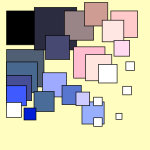 SCAM-2015-LemosPSL #code search #query #question #scalability
SCAM-2015-LemosPSL #code search #query #question #scalability- Can the use of types and query expansion help improve large-scale code search? (OALL, ACdP, HS, CVL), pp. 41–50.
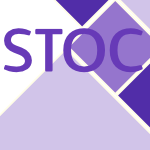 STOC-2015-HalldorssonT #graph #how #question
STOC-2015-HalldorssonT #graph #how #question- How Well Can Graphs Represent Wireless Interference? (MMH, TT), pp. 635–644.
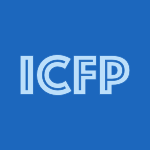 ICFP-2015-Russo #functional #haskell
ICFP-2015-Russo #functional #haskell- Functional pearl: two can keep a secret, if one of them uses Haskell (AR), pp. 280–288.
 CHI-2015-JohnsonRMT #collaboration #how
CHI-2015-JohnsonRMT #collaboration #how- Can You See Me Now?: How Field of View Affects Collaboration in Robotic Telepresence (SJ, IR, BM, LT), pp. 2397–2406.
 CHI-2015-SamsonovTSKH #towards
CHI-2015-SamsonovTSKH #towards- You Can’t Smoke Here: Towards Support for Space Usage Rules in Location-aware Technologies (PAS, XT, JS, WK, BH), pp. 971–974.
 CHI-2015-Vicencio-Moreira #game studies
CHI-2015-Vicencio-Moreira #game studies- Now You Can Compete With Anyone: Balancing Players of Different Skill Levels in a First-Person Shooter Game (RVM, RLM, CG), pp. 2255–2264.
 CHI-2015-WarshawMWKBS #algorithm #comprehension #people
CHI-2015-WarshawMWKBS #algorithm #comprehension #people- Can an Algorithm Know the “Real You”?: Understanding People’s Reactions to Hyper-personal Analytics Systems (JW, TM, SW, CK, MNB, BAS), pp. 797–806.
 CHI-2015-ZhangAK #how #question #what #why
CHI-2015-ZhangAK #how #question #what #why- Mailing Lists: Why Are They Still Here, What’s Wrong With Them, and How Can We Fix Them? (AXZ, MSA, DRK), pp. 4009–4018.
 CSCW-2015-Anya #design #exclamation #question #what
CSCW-2015-Anya #design #exclamation #question #what- Bridge the Gap!: What Can Work Design in Crowdwork Learn from Work Design Theories? (OA), pp. 612–627.
 DUXU-UI-2015-Passera #contract #design #how
DUXU-UI-2015-Passera #contract #design #how- Beyond the Wall of Text: How Information Design Can Make Contracts User-Friendly (SP), pp. 341–352.
 LCT-2015-BajajHKPSDY #question #word
LCT-2015-BajajHKPSDY #question #word- Audio Cues: Can Sound Be Worth a Hundred Words? (JB, AH, AK, RMP, KS, OD, KY), pp. 14–23.
 LCT-2015-CulenPSC #game studies #motivation #question
LCT-2015-CulenPSC #game studies #motivation #question- Can Games Motivate Urban Youth for Civic Engagement? (ALC, SP, SS, KC), pp. 549–560.
 ICEIS-v1-2015-Mocker #complexity #how
ICEIS-v1-2015-Mocker #complexity #how- Complexity in the Digital Age — How can IT Help, not Hurt (MM), p. IX.
 ICEIS-v2-2015-FissaaGHN #composition #how #question #semantics
ICEIS-v2-2015-FissaaGHN #composition #how #question #semantics- How Can Semantics and Context Awareness Enhance the Composition of Context-aware Services? (TF, HG, HH, MN), pp. 640–647.
 ICEIS-v2-2015-SarinhoLS #dataset #linked data #open data #question
ICEIS-v2-2015-SarinhoLS #dataset #linked data #open data #question- Can You Find All the Data You Expect in a Linked Dataset? (WTS, BFL, DS), pp. 648–655.
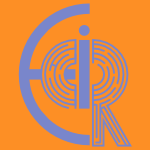 ECIR-2015-ZucconKP #effectiveness #self
ECIR-2015-ZucconKP #effectiveness #self- Diagnose This If You Can — On the Effectiveness of Search Engines in Finding Medical Self-diagnosis Information (GZ, BK, JRMP), pp. 562–567.
 ICML-2015-AnBB #how #linear #network #question
ICML-2015-AnBB #how #linear #network #question- How Can Deep Rectifier Networks Achieve Linear Separability and Preserve Distances? (SA, FB, MB), pp. 514–523.
 OOPSLA-2015-ToffolaPG #dynamic analysis #performance #problem
OOPSLA-2015-ToffolaPG #dynamic analysis #performance #problem- Performance problems you can fix: a dynamic analysis of memoization opportunities (LDT, MP, TRG), pp. 607–622.
 POPL-2015-VafeiadisBCMN #compilation #memory management #optimisation #what
POPL-2015-VafeiadisBCMN #compilation #memory management #optimisation #what- Common Compiler Optimisations are Invalid in the C11 Memory Model and what we can do about it (VV, TB, SC, RM, FZN), pp. 209–220.
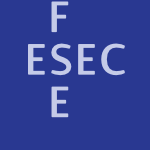 ESEC-FSE-2015-AcherBCBJ #product line
ESEC-FSE-2015-AcherBCBJ #product line- Product lines can jeopardize their trade secrets (MA, GB, BC, BB, JMJ), pp. 930–933.
 ICSE-v1-2015-MorenoBPOM #how #question
ICSE-v1-2015-MorenoBPOM #how #question- How Can I Use This Method? (LM, GB, MDP, RO, AM), pp. 880–890.
 ICSE-v2-2015-AndersonHVWCBG #student
ICSE-v2-2015-AndersonHVWCBG #student- CS/SE Instructors Can Improve Student Writing without Reducing Class Time Devoted to Technical Content: Experimental Results (PVA, SH, MAV, DW, MC, JEB, GCG), pp. 455–464.
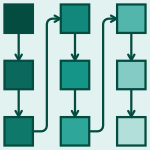 PLEASE-2015-ChitchyanNG #product line #re-engineering #what
PLEASE-2015-ChitchyanNG #product line #re-engineering #what- What Can Software Engineering Do for Sustainability: Case of Software Product Lines (RC, JN, IG), pp. 11–14.
 ICST-2015-ArltMPW #dependence #testing
ICST-2015-ArltMPW #dependence #testing- If A Fails, Can B Still Succeed? Inferring Dependencies between Test Results in Automotive System Testing (SA, TM, AP, SW), pp. 1–10.
 ICST-2015-ZhangAC #exclamation #model checking #verification
ICST-2015-ZhangAC #exclamation #model checking #verification- Yes! You Can Use Your Model Checker to Verify OSEK/VDX Applications (HZ, TA, YC), pp. 1–10.
 WRLA-2014-AlrahmanABL #concurrent #maude #memory management #modelling #question #source code
WRLA-2014-AlrahmanABL #concurrent #maude #memory management #modelling #question #source code- Can We Efficiently Check Concurrent Programs Under Relaxed Memory Models in Maude? (YAA, MA, AB, ALL), pp. 21–41.
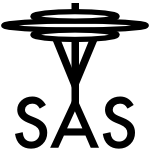 SAS-2014-AbdullaHH #exclamation #verification
SAS-2014-AbdullaHH #exclamation #verification- Block Me If You Can! — Context-Sensitive Parameterized Verification (PAA, FH, LH), pp. 1–17.
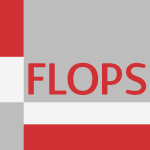 FLOPS-2014-Parys #how #question
FLOPS-2014-Parys #how #question- How Many Numbers Can a λ-Term Contain? (PP), pp. 302–318.
 ICALP-v1-2014-MancinskaV #bound #probability
ICALP-v1-2014-MancinskaV #bound #probability- Unbounded Entanglement Can Be Needed to Achieve the Optimal Success Probability (LM, TV), pp. 835–846.
 IFM-2014-BruniSNN #analysis #protocol #security
IFM-2014-BruniSNN #analysis #protocol #security- Formal Security Analysis of the MaCAN Protocol (AB, MS, FN, HRN), pp. 241–255.
 CHI-2014-DiSalvoLLJK #design #how #human-computer #matter
CHI-2014-DiSalvoLLJK #design #how #human-computer #matter- Making public things: how HCI design can express matters of concern (CFD, JL, TL, TJ, TK), pp. 2397–2406.
 CHI-2014-GreisAHM
CHI-2014-GreisAHM- I can wait a minute: uncovering the optimal delay time for pre-moderated user-generated content on public displays (MG, FA, NH, NM), pp. 1435–1438.
 CHI-2014-ShayKDHMSUBCC #question
CHI-2014-ShayKDHMSUBCC #question- Can long passwords be secure and usable? (RS, SK, ALD, P(H, MLM, SMS, BU, LB, NC, LFC), pp. 2927–2936.
 CSCW-2014-LiaoF
CSCW-2014-LiaoF- Can you hear me now?: mitigating the echo chamber effect by source position indicators (QVL, WTF), pp. 184–196.
 CSCW-2014-Rooksby #question
CSCW-2014-Rooksby #question- Can plans and situated actions be replicated? (JR), pp. 603–614.
 CSCW-2014-VitakK #facebook #how #people #process #quote
CSCW-2014-VitakK #facebook #how #people #process #quote- “You can’t block people offline”: examining how facebook’s affordances shape the disclosure process (JV, JK), pp. 461–474.
 DUXU-DI-2014-EstupinanRNFD #artificial reality #case study
DUXU-DI-2014-EstupinanRNFD #artificial reality #case study- Can Virtual Reality Increase Emotional Responses (Arousal and Valence)? A Pilot Study (SE, FR, PN, CF, ED), pp. 541–549.
 DUXU-DI-2014-Hellweg #development #education #future of #game studies #what
DUXU-DI-2014-Hellweg #development #education #future of #game studies #what- Wanting the Unwanted — What Games Can Teach Us about the Future of Software Development (DH), pp. 711–719.
 DUXU-DP-2014-BuchdidPB #aspect-oriented #persuasion
DUXU-DP-2014-BuchdidPB #aspect-oriented #persuasion- You Can Interact with Your TV and You May Like It an Investigation on Persuasive Aspects for an iDTV Application (SBB, RP, MCCB), pp. 208–219.
 HCI-AIMT-2014-ErikssonLSSK #interface #question
HCI-AIMT-2014-ErikssonLSSK #interface #question- Can User-Paced, Menu-free Spoken Language Interfaces Improve Dual Task Handling While Driving? (AE, AL, AS, AS, KK), pp. 394–405.
 HCI-AS-2014-MurrayWHSMGBTSCSH #animation #interactive #people #physics #process #question
HCI-AS-2014-MurrayWHSMGBTSCSH #animation #interactive #people #physics #process #question- Can a Theory-Informed Interactive Animation Increase Intentions to Engage in Physical Activity in Young People with Asthma? (JM, BW, GH, SS, JM, DG, GB, ST, FS, LC, AS, SH), pp. 289–300.
 HCI-TMT-2014-MattosPP #identification #interactive
HCI-TMT-2014-MattosPP #identification #interactive- Can Users Speak for Themselves? Investigating Users Ability to Identify Their Own Interactive Breakdowns (BAMM, RLSP, ROP), pp. 521–532.
 SCSM-2014-Fu #microblog #network #social
SCSM-2014-Fu #microblog #network #social- Can Network Help Chinese Microblogs Diffuse? Analyzing 118 Networks of Reposts About Social Issues in China (KwF), pp. 331–341.
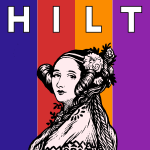 HILT-2014-Crocker #c++ #question
HILT-2014-Crocker #c++ #question- Can C++ be made as safe as SPARK? (DC), pp. 5–12.
 CIKM-2014-HassanFVDL0
CIKM-2014-HassanFVDL0- Anything You Can Do, I Can Do Better: Finding Expert Teams by CrewScout (NH, HF, RV, GD, CL, NZ), pp. 2030–2032.
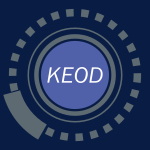 KEOD-2014-GonenFEBWZP #how #maintenance #modelling #ontology #question
KEOD-2014-GonenFEBWZP #how #maintenance #modelling #ontology #question- Maintaining SOA Systems of the Future — How Can Ontological Modeling Help? (BG, XF, EES, SB, NW, AZ, IP), pp. 376–381.
 KEOD-2014-Kraines #ontology #order #question #semantics #similarity
KEOD-2014-Kraines #ontology #order #question #semantics #similarity- Can SKOS Ontologies Improve the Accuracy of Measuring Semantic Similarity of Purchase Orders? (SBK), pp. 248–255.
 SAC-2014-RockiBS #abstraction #future of #performance #programming #question
SAC-2014-RockiBS #abstraction #future of #performance #programming #question- The future of accelerator programming: abstraction, performance or can we have both? (KR, MB, RS), pp. 886–895.
 SLE-2014-SloaneRH #how
SLE-2014-SloaneRH #how- Respect Your Parents: How Attribution and Rewriting Can Get Along (AMS, MR, LGCH), pp. 191–210.
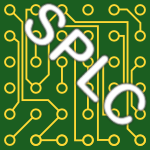 SPLC-2014-Reinhartz-Berger #automation #domain model #modelling
SPLC-2014-Reinhartz-Berger #automation #domain model #modelling- Can domain modeling be automated?: levels of automation in domain modeling (IRB), p. 359.
 OSDI-2014-YuanLZRZZJS #analysis #data-driven #distributed #testing
OSDI-2014-YuanLZRZZJS #analysis #data-driven #distributed #testing- Simple Testing Can Prevent Most Critical Failures: An Analysis of Production Failures in Distributed Data-Intensive Systems (DY, YL, XZ, GRR, XZ, YZ, PJ, MS), pp. 249–265.
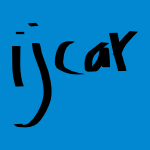 IJCAR-2014-Cortier #how #logic
IJCAR-2014-Cortier #how #logic- Electronic Voting: How Logic Can Help (VC), pp. 16–25.
 DAC-2013-KrishnaswamyBP #question
DAC-2013-KrishnaswamyBP #question- Can CAD cure cancer? (SK, BB, DP), p. 2.
 DATE-2013-Mitcheson #adaptation #energy #performance #question
DATE-2013-Mitcheson #adaptation #energy #performance #question- Adaptable, high performance energy harvesters: can energy harvesting deliver enough power for automotive electronics? (PDM), p. 482.
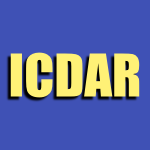 ICDAR-2013-KhanKS #identification #problem #question #verification
ICDAR-2013-KhanKS #identification #problem #question #verification- Can Signature Biometrics Address Both Identification and Verification Problems? (SHK, ZK, FS), pp. 981–985.
 SIGMOD-2013-MullerKLM #named #what
SIGMOD-2013-MullerKLM #named #what- WOW: what the world of (data) warehousing can learn from the World of Warcraft (RM, TK, GML, JM), pp. 961–964.
 CSEET-2013-NobleHBB #design #education #programming language #question #re-engineering
CSEET-2013-NobleHBB #design #education #programming language #question #re-engineering- Designing Grace: Can an introductory programming language support the teaching of software engineering? (JN, MH, KBB, APB), pp. 219–228.
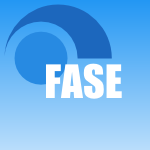 FASE-2013-BongiovanniH #protocol
FASE-2013-BongiovanniH #protocol- A Mechanized Model for CAN Protocols (FB, LH), pp. 266–281.
 ICSM-2013-OyetoyanCC #component #question #refactoring
ICSM-2013-OyetoyanCC #component #question #refactoring- Can Refactoring Cyclic Dependent Components Reduce Defect-Proneness? (TDO, DSC, RC), pp. 420–423.
 ICALP-v2-2013-BecchettiBDKM #bound #complexity #convergence #proving
ICALP-v2-2013-BecchettiBDKM #bound #complexity #convergence #proving- Physarum Can Compute Shortest Paths: Convergence Proofs and Complexity Bounds (LB, VB, MD, AK, KM), pp. 472–483.
 CHI-2013-AceitunoCR #how
CHI-2013-AceitunoCR #how- How low can you go?: human limits in small unidirectional mouse movements (JA, GC, NR), pp. 1383–1386.
 CHI-2013-AnnettB #exclamation #gesture #symmetry
CHI-2013-AnnettB #exclamation #gesture #symmetry- Your left hand can do it too!: investigating intermanual, symmetric gesture transfer on touchscreens (MA, WFB), pp. 1119–1128.
 CHI-2013-FaresFK #question
CHI-2013-FaresFK #question- Can we beat the mouse with MAGIC? (RF, SF, OK), pp. 1387–1390.
 CHI-2013-RauARR #design #interactive #learning #why
CHI-2013-RauARR #design #interactive #learning #why- Why interactive learning environments can have it all: resolving design conflicts between competing goals (MAR, VA, NR, SR), pp. 109–118.
 CHI-2013-YangPCLNC #design #developer #development #exclamation #tool support
CHI-2013-YangPCLNC #design #developer #development #exclamation #tool support- I can do text analytics!: designing development tools for novice developers (HY, DPW, LC, YL, BN, ACF), pp. 1599–1608.
 CSCW-2013-PanLCL #process #social #what
CSCW-2013-PanLCL #process #social #what- To answer or not: what non-qa social activities can tell (YP, LL, CYC, QL), pp. 1253–1263.
 DUXU-CXC-2013-MouraVCBSTLK #exclamation #game studies #how #learning #mobile
DUXU-CXC-2013-MouraVCBSTLK #exclamation #game studies #how #learning #mobile- Luz, Câmera, Libras!: How a Mobile Game Can Improve the Learning of Sign Languages (GdSM, LAV, AC, FB, DdS, JMXNT, CWML, JK), pp. 266–275.
 DUXU-CXC-2013-Stevens #behaviour #gamification #how #social
DUXU-CXC-2013-Stevens #behaviour #gamification #how #social- How Gamification and Behavior Science Can Drive Social Change One Employee at a Time (SHS), pp. 597–601.
 DUXU-PMT-2013-Matthiessen #design #education #experience #industrial #interactive #what
DUXU-PMT-2013-Matthiessen #design #education #experience #industrial #interactive #what- Interactive Design and the Human Experience: What Can Industrial Design Teach Us (NM), pp. 100–106.
 HCI-AMTE-2013-McDougallR #predict
HCI-AMTE-2013-McDougallR #predict- Ease of Icon Processing Can Predict Icon Appeal (SM, IR), pp. 575–584.
 HIMI-D-2013-KastlerS #experience #image #interactive #question #user interface
HIMI-D-2013-KastlerS #experience #image #interactive #question #user interface- Can a Clipboard Improve User Interaction and User Experience in Web-Based Image Search? (LK, AS), pp. 203–212.
 ICEIS-v1-2013-SecaM #how #question
ICEIS-v1-2013-SecaM #how #question- IT applied to Public Lighting Management — How IT Can Improve Public Lighting Management? (NS, FM), pp. 513–518.
 ECIR-2013-BolshakovaLN #modelling #topic
ECIR-2013-BolshakovaLN #modelling #topic- Topic Models Can Improve Domain Term Extraction (EIB, NVL, MN), pp. 684–687.
 SEKE-2013-JulianoTSM #assessment #automation #case study #complexity #similarity
SEKE-2013-JulianoTSM #assessment #automation #case study #complexity #similarity- Automated Computation of Use Cases Similarity can Aid the Assessment of Cohesion and Complexity of Classes (S) (RCJ, BANT, MSS, MdAM), pp. 494–499.
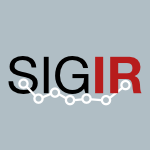 SIGIR-2013-Rodriguez-VaamondeTF #documentation #image #using #web #what
SIGIR-2013-Rodriguez-VaamondeTF #documentation #image #using #web #what- What can pictures tell us about web pages?: improving document search using images (SRV, LT, AWF), pp. 849–852.
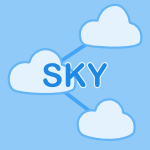 SKY-2013-Gomes #how #ontology #recommendation #representation #using
SKY-2013-Gomes #how #ontology #recommendation #representation #using- Representing Knowledge using Ontologies: How Search, Browse and Recommendation Can Be Performed (PG), pp. 1–3.
 PPDP-2013-KrienerKB #coq #prolog #proving #semantics
PPDP-2013-KrienerKB #coq #prolog #proving #semantics- Proofs you can believe in: proving equivalences between Prolog semantics in Coq (JK, AK, SB), pp. 37–48.
 POPL-2013-Myers #distributed #how
POPL-2013-Myers #distributed #how- How languages can save distributed computing (ACM), pp. 315–316.
 RE-2013-WangLWYZL #debugging #dependence #integration #network #question #requirements
RE-2013-WangLWYZL #debugging #dependence #integration #network #question #requirements- Can requirements dependency network be used as early indicator of software integration bugs? (JW, JL, QW, DY, HZ, ML), pp. 185–194.
 SPLC-2013-SchulzeMB #functional #question #safety #variability
SPLC-2013-SchulzeMB #functional #question #safety #variability- Functional safety and variability: can it be brought together? (MS, JM, DB), pp. 236–243.
 ICST-2013-PastoreMF #named #problem #question
ICST-2013-PastoreMF #named #problem #question- CrowdOracles: Can the Crowd Solve the Oracle Problem? (FP, LM, GF), pp. 342–351.
 ASE-2012-WangD0ZLM #question
ASE-2012-WangD0ZLM #question- Can I clone this piece of code here? (XW, YD, LZ, DZ, EL, HM), pp. 170–179.
 CASE-2012-HoNNH #question #what
CASE-2012-HoNNH #question #what- What can be inferred from a tactile arrayed sensor in autonomous in-hand manipulation? (VAH, TN, AN, SH), pp. 461–468.
 DAC-2012-KoushanfarFMBSSP #question
DAC-2012-KoushanfarFMBSSP #question- Can EDA combat the rise of electronic counterfeiting? (FK, SF, CM, WB, MS, PS, MP), pp. 133–138.
 DAC-2012-QiuM #question #scalability
DAC-2012-QiuM #question #scalability- Can pin access limit the footprint scaling? (XQ, MMS), pp. 1100–1106.
 DATE-2012-Al-HashimiM #framework #hardware #question #verification
DATE-2012-Al-HashimiM #framework #hardware #question #verification- Accelerators and emulators: Can they become the platform of choice for hardware verification? (BMAH, RM), p. 430.
 DATE-2012-AxerSE #bound #probability
DATE-2012-AxerSE #bound #probability- Probabilistic response time bound for CAN messages with arbitrary deadlines (PA, MS, RE), pp. 1114–1117.
 SIGMOD-2012-WangLF #adaptation #framework #similarity
SIGMOD-2012-WangLF #adaptation #framework #similarity- Can we beat the prefix filtering?: an adaptive framework for similarity join and search (JW, GL, JF), pp. 85–96.
 VLDB-2012-FloratouTDPZ #question
VLDB-2012-FloratouTDPZ #question- Can the Elephants Handle the NoSQL Onslaught? (AF, NT, DJD, JMP, DZ), pp. 1712–1723.
 ITiCSE-2012-HershkovichH #education #how #tool support
ITiCSE-2012-HershkovichH #education #how #tool support- How innovative technology tools can be used to create new methodology for teaching knowledge (EH, BH), p. 387.
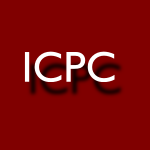 ICPC-2012-HauptmannJEJV #clone detection #comprehension #detection #question
ICPC-2012-HauptmannJEJV #clone detection #comprehension #detection #question- Can clone detection support test comprehension? (BH, MJ, SE, EJ, RV), pp. 209–218.
 ICSM-2012-ZhangPXZ #developer #what #why
ICSM-2012-ZhangPXZ #developer #what #why- Cloning practices: Why developers clone and what can be changed (GZ, XP, ZX, WZ), pp. 285–294.
 MSR-2012-GigerPG #analysis #empirical #predict
MSR-2012-GigerPG #analysis #empirical #predict- Can we predict types of code changes? An empirical analysis (EG, MP, HCG), pp. 217–226.
 WCRE-2012-AbebeATAG #fault #predict #question #smell
WCRE-2012-AbebeATAG #fault #predict #question #smell- Can Lexicon Bad Smells Improve Fault Prediction? (SLA, VA, PT, GA, YGG), pp. 235–244.
 CHI-2012-HayashiRNTRP #named
CHI-2012-HayashiRNTRP #named- TimeBlocks: mom, can I have another block of time (EH, MAR, ZHN, NT, SR, EP), pp. 1713–1716.
 CHI-2012-HourcadeB #how #visual notation
CHI-2012-HourcadeB #how #visual notation- How small can you go?: analyzing the effect of visual angle in pointing tasks (JPH, NEBR), pp. 213–216.
 CHI-2012-Jamison-PowellLDGL #quote #twitter
CHI-2012-Jamison-PowellLDGL #quote #twitter- “I can’t get no sleep”: discussing #insomnia on twitter (SJP, CL, LD, AG, SWL), pp. 1501–1510.
 CHI-2012-JianuL #evaluation #how #user interface
CHI-2012-JianuL #evaluation #how #user interface- An evaluation of how small user interface changes can improve scientists’ analytic strategies (RJ, DHL), pp. 2953–2962.
 CHI-2012-KlempererLMSUBCGR #data access #exclamation #using
CHI-2012-KlempererLMSUBCGR #data access #exclamation #using- Tag, you can see it!: using tags for access control in photo sharing (PFK, YL, MLM, MS, BU, LB, LFC, NG, MKR), pp. 377–386.
 CHI-2012-KoppelBMW #behaviour
CHI-2012-KoppelBMW #behaviour- Chained displays: configurations of public displays can be used to influence actor-, audience-, and passer-by behavior (MTK, GB, JM, RW), pp. 317–326.
 CHI-2012-LeonUSWBC #behaviour #evaluation #online #tool support #usability #why
CHI-2012-LeonUSWBC #behaviour #evaluation #online #tool support #usability #why- Why Johnny can’t opt out: a usability evaluation of tools to limit online behavioral advertising (PGL, BU, RS, YW, RB, LFC), pp. 589–598.
 CSCW-2012-Olson #research
CSCW-2012-Olson #research- Broader impacts: research you can use (JO), pp. 3–4.
 CIKM-2012-ShiMWG #in the cloud #online #query
CIKM-2012-ShiMWG #in the cloud #online #query- You can stop early with COLA: online processing of aggregate queries in the cloud (YS, XM, FW, YG), pp. 1223–1232.
 ECIR-2012-DiriyeTB #interactive #process #query
ECIR-2012-DiriyeTB #interactive #process #query- A Little Interaction Can Go a Long Way: Enriching the Query Formulation Process (AD, AT, AB), pp. 531–534.
 ECIR-2012-LucchesePSVV #how #random
ECIR-2012-LucchesePSVV #how #random- How Random Walks Can Help Tourism (CL, RP, FS, HV, RV), pp. 195–206.
 ICPR-2012-HadidGKPBN #question
ICPR-2012-HadidGKPBN #question- Can gait biometrics be Spoofed? (AH, MG, VK, MP, JDB, MSN), pp. 3280–3283.
 ICPR-2012-MakiharaFY #question #recognition
ICPR-2012-MakiharaFY #question #recognition- Can gait fluctuations improve gait recognition? (YM, YF, YY), pp. 3276–3279.
 KDD-2012-BeutelPRF #network #question
KDD-2012-BeutelPRF #network #question- Interacting viruses in networks: can both survive? (AB, BAP, RR, CF), pp. 426–434.
 SAC-2012-ZhaoLCSS #information management #modelling #process #question
SAC-2012-ZhaoLCSS #information management #modelling #process #question- Can business process modeling bridge the gap between business and information systems? (LZ, KL, EVC, SdFMS, PS), pp. 1723–1724.
 ICSE-2012-Sprenger #case study #experience #how #industrial #re-engineering
ICSE-2012-Sprenger #case study #experience #how #industrial #re-engineering- How software engineering can benefit from traditional industries — A practical experience report (Invited industrial talk) (TS), p. 1000.
 PPoPP-2012-BlellochFGS #algorithm #parallel #performance
PPoPP-2012-BlellochFGS #algorithm #parallel #performance- Internally deterministic parallel algorithms can be fast (GEB, JTF, PBG, JS), pp. 181–192.
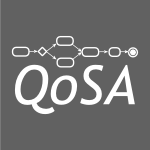 QoSA-ISARCS-2011-Zave #architecture #how #internet
QoSA-ISARCS-2011-Zave #architecture #how #internet- How software architecture can make an application-friendly internet (PZ), pp. 1–2.
 CASE-2011-PuiuM #communication #realtime
CASE-2011-PuiuM #communication #realtime- The time delay control of CAN messages for real-time communication (DP, FM), pp. 631–636.
 DAC-2011-GaillardonBMNCO #3d #architecture #question #towards
DAC-2011-GaillardonBMNCO #3d #architecture #question #towards- Can we go towards true 3-D architectures? (PEG, MHBJ, PHM, JPN, FC, IO), pp. 282–283.
 DATE-2011-KernST #automation #concept #data type #embedded #migration
DATE-2011-KernST #automation #concept #data type #embedded #migration- An automated data structure migration concept — From CAN to Ethernet/IP in automotive embedded systems (CANoverIP) (AK, TS, JT), pp. 112–117.
 DATE-2011-ZiermannTS #adaptation #algorithm #named
DATE-2011-ZiermannTS #adaptation #algorithm #named- DynOAA — Dynamic offset adaptation algorithm for improving response times of CAN systems (TZ, JT, ZS), pp. 269–272.
 DRR-2011-LamiroyLKH #analysis #documentation #how #research #resource management
DRR-2011-LamiroyLKH #analysis #documentation #how #research #resource management- How carefully designed open resource sharing can help and expand document analysis research (BL, DPL, HFK, JH), pp. 1–10.
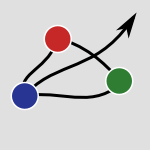 HT-2011-Bernstein #hypermedia
HT-2011-Bernstein #hypermedia- Can we talk about spatial hypertext (MB), pp. 103–112.
 CSEET-2011-BromanS #how #question #re-engineering #student
CSEET-2011-BromanS #how #question #re-engineering #student- How can we make software engineering text books well-founded, up-to-date, and accessible to students? (DB, KS), pp. 386–390.
 CSEET-2011-ChimalakondaN #education #learning #question #re-engineering
CSEET-2011-ChimalakondaN #education #learning #question #re-engineering- Can we make software engineering education better by applying learning theories? (SC, KVN), p. 561.
 ICPC-2011-DitGPA #feature model #identifier #question
ICPC-2011-DitGPA #feature model #identifier #question- Can Better Identifier Splitting Techniques Help Feature Location? (BD, LG, DP, GA), pp. 11–20.
 ICSM-2011-Kemmerer #how #what
ICSM-2011-Kemmerer #how #what- How to steal a botnet and what can happen when you do (RAK), p. 1.
 ICSM-2011-VasilescuSB #case study #metric
ICSM-2011-VasilescuSB #case study #metric- You can’t control the unfamiliar: A study on the relations between aggregation techniques for software metrics (BV, AS, MvdB), pp. 313–322.
 MSR-2011-BhattacharyaN #debugging #modelling #predict #question
MSR-2011-BhattacharyaN #debugging #modelling #predict #question- Bug-fix time prediction models: can we do better? (PB, IN), pp. 207–210.
 WCRE-2011-AryaniPLMN #dependence #predict #question #using
WCRE-2011-AryaniPLMN #dependence #predict #question #using- Can We Predict Dependencies Using Domain information? (AA, FP, ML, ANM, ON), pp. 55–64.
 STOC-2011-RegevK #communication #quantum
STOC-2011-RegevK #communication #quantum- Quantum one-way communication can be exponentially stronger than classical communication (OR, BK), pp. 31–40.
 ICALP-v2-2011-Clemente #automaton
ICALP-v2-2011-Clemente #automaton- Büchi Automata Can Have Smaller Quotients (LC), pp. 258–270.
 CHI-2011-HsiehHK #how
CHI-2011-HsiehHK #how- Donate for credibility: how contribution incentives can improve credibility (GH, SEH, REK), pp. 3435–3438.
 CHI-2011-Monroy-HernandezHGb #automation #community #how #online
CHI-2011-Monroy-HernandezHGb #automation #community #how #online- Computers can’t give credit: how automatic attribution falls short in an online remixing community (AMH, BMH, JGR, DB), pp. 3421–3430.
 CHI-2011-PasqueroH #feedback #interactive #mobile
CHI-2011-PasqueroH #feedback #interactive #mobile- Tactile feedback can assist vision during mobile interactions (JP, VH), pp. 3277–3280.
 CSCW-2011-PatilPK #navigation #privacy #question #social
CSCW-2011-PatilPK #navigation #privacy #question #social- With a little help from my friends: can social navigation inform interpersonal privacy preferences? (SP, XP, AK), pp. 391–394.
 DHM-2011-WelkePRJ #analysis #how #modelling #validation #what
DHM-2011-WelkePRJ #analysis #how #modelling #validation #what- What Is Human? How the Analysis of Brain Dynamics Can Help to Improve and Validate Driver Models (SW, JP, MR, TJ), pp. 513–522.
 DUXU-v1-2011-Innes #design #enterprise #why
DUXU-v1-2011-Innes #design #enterprise #why- Why Enterprises Can’t Innovate: Helping Companies Learn Design Thinking (JI), pp. 442–448.
 DUXU-v1-2011-Renner #design #how #image #process #question #visual notation
DUXU-v1-2011-Renner #design #how #image #process #question #visual notation- Image, Imagination, Innovation: How Can We Overcome the Common Ground in the Processes of Visual Design? (MR), pp. 285–294.
 HCD-2011-YajimaSY #comprehension #problem #visualisation
HCD-2011-YajimaSY #comprehension #problem #visualisation- Understanding the Business Realities: An Interview Technique Which Can Visualize the Job Problems (AY, YS, TY), pp. 449–457.
 HCI-ITE-2011-KwonCSAG #how #interactive #internet
HCI-ITE-2011-KwonCSAG #how #interactive #internet- Older User-Computer Interaction on the Internet: How Conversational Agents Can Help (WSK, VC, SIS, HA, JEG), pp. 533–536.
 HCI-ITE-2011-MiyabeY #people #question
HCI-ITE-2011-MiyabeY #people #question- Can Indicating Translation Accuracy Encourage People to Rectify Inaccurate Translations? (MM, TY), pp. 368–377.
 HCI-MIIE-2011-TakahashiAI #question #twitter
HCI-MIIE-2011-TakahashiAI #question #twitter- Can Twitter Be an Alternative of Real-World Sensors? (TT, SA, NI), pp. 240–249.
 HCI-UA-2011-GuhaDF #design #how
HCI-UA-2011-GuhaDF #design #how- How Children Can Design the Future (MLG, AD, JAF), pp. 559–569.
 HIMI-v2-2011-TakadamaOSMOIHS #order #question #what
HIMI-v2-2011-TakadamaOSMOIHS #order #question #what- What Kinds of Human Negotiation Skill Can Be Acquired by Changing Negotiation Order of Bargaining Agents? (KT, AO, KS, HM, MO, YI, KH, HS), pp. 335–344.
 IDGD-2011-ChiaoLYCL #experience #towards
IDGD-2011-ChiaoLYCL #experience #towards- Can I Help You?: Towards the Improvement of Occupational Experience for Convenience Store Employees in Taiwan (YLC, CHL, HWY, YYC, PLL), pp. 361–368.
 ICEIS-v2-2011-JiangX #adaptation #flexibility
ICEIS-v2-2011-JiangX #adaptation #flexibility- Only Flexibility can Adapt to the Outside World, and Only Solidification can Unify the Whole System (JJ, YX), pp. 302–306.
 CIKM-2011-YangZKL #how #learning #question #why
CIKM-2011-YangZKL #how #learning #question #why- Can irrelevant data help semi-supervised learning, why and how? (HY, SZ, IK, MRL), pp. 937–946.
 ICML-2011-UrnerSB #predict
ICML-2011-UrnerSB #predict- Access to Unlabeled Data can Speed up Prediction Time (RU, SSS, SBD), pp. 641–648.
 KEOD-2011-SharmaB #ontology #problem #question
KEOD-2011-SharmaB #ontology #problem #question- Can Ontologies Be Sufficient Solution to Requirement Engineering Problem? (RS, KKB), pp. 461–465.
 SIGIR-2011-AgeevGLA #game studies #interactive #modelling #using #web
SIGIR-2011-AgeevGLA #game studies #interactive #modelling #using #web- Find it if you can: a game for modeling different types of web search success using interaction data (MA, QG, DL, EA), pp. 345–354.
 ECOOP-2011-Taube-SchockWW #question
ECOOP-2011-Taube-SchockWW #question- Can We Avoid High Coupling? (CTS, RJW, IHW), pp. 204–228.
 OOPSLA-2011-JovicAH #debugging #detection #performance
OOPSLA-2011-JovicAH #debugging #detection #performance- Catch me if you can: performance bug detection in the wild (MJ, AA, MH), pp. 155–170.
 RE-2011-Waldmann #agile #constraints #development #requirements #what
RE-2011-Waldmann #agile #constraints #development #requirements #what- There’s never enough time: Doing requirements under resource constraints, and what requirements engineering can learn from agile development (BW), pp. 301–305.
 DAC-2010-KeshavaHP #challenge #how #validation
DAC-2010-KeshavaHP #challenge #how #validation- Post-silicon validation challenges: how EDA and academia can help (JK, NH, CP), pp. 3–7.
 MSR-2010-MaalejH #development #question
MSR-2010-MaalejH #development #question- Can development work describe itself? (WM, HJH), pp. 191–200.
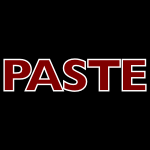 PASTE-2010-MizushimaMY #constant #parsing
PASTE-2010-MizushimaMY #constant #parsing- Packrat parsers can handle practical grammars in mostly constant space (KM, AM, YY), pp. 29–36.
 ICALP-v1-2010-Welzl #constraints #satisfiability
ICALP-v1-2010-Welzl #constraints #satisfiability- When Conflicting Constraints Can Be Resolved — The Lovász Local Lemma and Satisfiability (EW), p. 18.
 ICALP-v2-2010-AlistarhGGZ #cost analysis #how #performance
ICALP-v2-2010-AlistarhGGZ #cost analysis #how #performance- How Efficient Can Gossip Be? (On the Cost of Resilient Information Exchange) (DA, SG, RG, MZ), pp. 115–126.
 ICALP-v2-2010-CollinsCGL
ICALP-v2-2010-CollinsCGL- Tell Me Where I Am So I Can Meet You Sooner (AC, JC, LG, AL), pp. 502–514.
 ICGT-2010-BrandtH #enterprise #graph transformation #how #modelling #question
ICGT-2010-BrandtH #enterprise #graph transformation #how #modelling #question- How Far Can Enterprise Modeling for Banking Be Supported by Graph Transformation? (CB, FH), pp. 3–26.
 CHI-2010-DavidoffZD #coordination #how #product line
CHI-2010-DavidoffZD #coordination #how #product line- How routine learners can support family coordination (SD, JZ, AKD), pp. 2461–2470.
 CHI-2010-ShastriFBTP #process
CHI-2010-ShastriFBTP #process- O job can you return my mojo: improving human engagement and enjoyment in routine activities (DS, YF, RB, PT, IP), pp. 2491–2498.
 EDOC-2010-Gronmo #aspect-oriented #graph transformation #question
EDOC-2010-Gronmo #aspect-oriented #graph transformation #question- Can Graph Transformation Make Aspect Languages for BPEL Redundant? (RG), pp. 153–162.
 CIKM-2010-PiwowarskiFLR #information retrieval #quantum #what
CIKM-2010-PiwowarskiFLR #information retrieval #quantum #what- What can quantum theory bring to information retrieval (BP, IF, ML, KvR), pp. 59–68.
 CIKM-2010-ThurauKB #matrix
CIKM-2010-ThurauKB #matrix- Yes we can: simplex volume maximization for descriptive web-scale matrix factorization (CT, KK, CB), pp. 1785–1788.
 CIKM-2010-YuKN #named #question
CIKM-2010-YuKN #named #question- RankSVR: can preference data help regression? (HY, SK, SHN), pp. 879–888.
 ECIR-2010-AnderkaSP #bound #similarity #why
ECIR-2010-AnderkaSP #bound #similarity #why- Cross-Language High Similarity Search: Why No Sub-linear Time Bound Can Be Expected (MA, BS, MP), pp. 640–644.
 ICPR-2010-TresadernC #constraints #performance
ICPR-2010-TresadernC #constraints #performance- Gradient Constraints Can Improve Displacement Expert Performance (PAT, TFC), pp. 157–160.
 ICPR-2010-UlgesB #question #recognition #segmentation
ICPR-2010-UlgesB #question #recognition #segmentation- Can Motion Segmentation Improve Patch-Based Object Recognition? (AU, TMB), pp. 3041–3044.
 KDD-2010-AttenbergP #classification #learning #modelling #why
KDD-2010-AttenbergP #classification #learning #modelling #why- Why label when you can search?: alternatives to active learning for applying human resources to build classification models under extreme class imbalance (JA, FJP), pp. 423–432.
 SEKE-2010-AsteasuainB #specification
SEKE-2010-AsteasuainB #specification- Specification patterns can be formal and still easy (FA, VAB), pp. 430–436.
 SIGIR-2010-AhmedN #multi #people #question
SIGIR-2010-AhmedN #multi #people #question- multi Searcher: can we support people to get information from text they can’t read or understand? (FA, AN), pp. 837–838.
 SIGIR-2010-LiuLGB #behaviour #detection
SIGIR-2010-LiuLGB #behaviour #detection- Can search systems detect users’ task difficulty?: some behavioral signals (JL, CL, JG, NJB), pp. 845–846.
 OOPSLA-2010-ReichenbachISAG #garbage collection #what
OOPSLA-2010-ReichenbachISAG #garbage collection #what- What can the GC compute efficiently?: a language for heap assertions at GC time (CR, NI, YS, EA, SZG), pp. 256–269.
 RE-2010-Beatty #question #what
RE-2010-Beatty #question #what- My Company Can’t Afford RE Training Right Now, What Do We Do? (JB), p. 387.
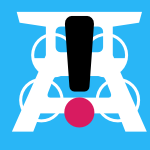 REFSQ-2010-BrillSK #case study #question #requirements
REFSQ-2010-BrillSK #case study #question #requirements- Videos vs. Use Cases: Can Videos Capture More Requirements under Time Pressure? (OB, KS, EK), pp. 30–44.
 SAC-2010-ChowdhuryZ #complexity #metric #question
SAC-2010-ChowdhuryZ #complexity #metric #question- Can complexity, coupling, and cohesion metrics be used as early indicators of vulnerabilities? (IC, MZ), pp. 1963–1969.
 SAC-2010-LiuCXMBG #architecture #domain-specific language #question
SAC-2010-LiuCXMBG #architecture #domain-specific language #question- Can domain-specific languages be implemented by service-oriented architecture? (SHL, AC, XX, MM, BRB, JG), pp. 2491–2492.
 ICSE-2010-JurgensDFHSWDS #clone detection #detection #quality #question #requirements #specification
ICSE-2010-JurgensDFHSWDS #clone detection #detection #quality #question #requirements #specification- Can clone detection support quality assessments of requirements specifications? (EJ, FD, MF, BH, BS, SW, CD, JS), pp. 79–88.
 ICSE-2010-KumarSS #for free
ICSE-2010-KumarSS #for free- Can we certify systems for freedom from malware (NVNK, HJS, RKS), pp. 175–178.
 OSDI-2010-SherwoodGYACMP #network #question
OSDI-2010-SherwoodGYACMP #network #question- Can the Production Network Be the Testbed? (RS, GG, KKY, GA, MC, NM, GMP), pp. 365–378.
 DATE-2009-ZiermannWT #network #protocol
DATE-2009-ZiermannWT #network #protocol- CAN+: A new backward-compatible Controller Area Network (CAN) protocol with up to 16× higher data rates (TZ, SW, JT), pp. 1088–1093.
 CSEET-2009-ThompsonE09a #how #question #student
CSEET-2009-ThompsonE09a #how #question #student- How Can We Scale-Up Student Admissions and Graduate Completions? (JBT, HME), pp. 298–299.
 ITiCSE-2009-HuangB #approach #question
ITiCSE-2009-HuangB #approach #question- A unified approach to introductory computer science: can one size fit all? (TH, AB), pp. 253–257.
 ESOP-2009-Eber #contract #design #programming language #question #specification #tool support #what
ESOP-2009-Eber #contract #design #programming language #question #specification #tool support #what- The Financial Crisis, a Lack of Contract Specification Tools: What Can Finance Learn from Programming Language Design? (JME), pp. 205–206.
 ESOP-2009-WadlerF #source code
ESOP-2009-WadlerF #source code- Well-Typed Programs Can’t Be Blamed (PW, RBF), pp. 1–16.
 ICPC-2009-KagdiP #question
ICPC-2009-KagdiP #question- Who can help me with this change request? (HHK, DP), pp. 273–277.
 ICALP-v2-2009-AnagnostopoulosKMU #how
ICALP-v2-2009-AnagnostopoulosKMU #how- Sort Me If You Can: How to Sort Dynamic Data (AA, RK, MM, EU), pp. 339–350.
 ICALP-v2-2009-ClementiPS #named
ICALP-v2-2009-ClementiPS #named- MANETS: High Mobility Can Make Up for Low Transmission Power (AEFC, FP, RS), pp. 387–398.
 ICALP-v2-2009-GuerraouiR #mobile
ICALP-v2-2009-GuerraouiR #mobile- Names Trump Malice: Tiny Mobile Agents Can Tolerate Byzantine Failures (RG, ER), pp. 484–495.
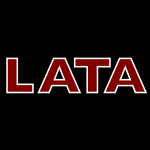 LATA-2009-Blanchet-SadriABM #how #question #word
LATA-2009-Blanchet-SadriABM #how #question #word- How Many Holes Can an Unbordered Partial Word Contain? (FBS, EA, CB, RM), pp. 176–187.
 FM-2009-BonzanniFFK #biology #formal method #question #what
FM-2009-BonzanniFFK #biology #formal method #question #what- What Can Formal Methods Bring to Systems Biology? (NB, KAF, WF, EK), pp. 16–22.
 FM-2009-HoenickeLPSW
FM-2009-HoenickeLPSW- It’s Doomed; We Can Prove It (JH, KRML, AP, MS, TW), pp. 338–353.
 CHI-2009-KarlsonBS #comprehension #mobile
CHI-2009-KarlsonBS #comprehension #mobile- Can I borrow your phone?: understanding concerns when sharing mobile phones (AKK, AJBB, SES), pp. 1647–1650.
 CHI-2009-YunSPD #experience #game studies
CHI-2009-YunSPD #experience #game studies- O’ game, can you feel my frustration?: improving user’s gaming experience via stresscam (CY, DS, IP, ZD), pp. 2195–2204.
 HCI-NT-2009-PalanqueLNB #interactive #prototype
HCI-NT-2009-PalanqueLNB #interactive #prototype- High-Fidelity Prototyping of Interactive Systems Can Be Formal Too (PAP, JFL, DN, EB), pp. 667–676.
 IDGD-2009-ChavanAKK #how #mobile #women
IDGD-2009-ChavanAKK #how #mobile #women- How Mobile Money Can Drive Financial Inclusion for Women at the Bottom of the Pyramid (BOP) in Indian Urban Centers (ALC, SA, AK, PK), pp. 475–484.
 ICEIS-HCI-2009-TaggB #how #information management #quantum #question
ICEIS-HCI-2009-TaggB #how #information management #quantum #question- How Can a Quantum Improvement in Personal and Group Information Management be Realized? (RT, TB), pp. 136–141.
 CIKM-2009-HeCPQMG #detection #evolution #how #question #topic
CIKM-2009-HeCPQMG #detection #evolution #how #question #topic- Detecting topic evolution in scientific literature: how can citations help? (QH, BC, JP, BQ, PM, CLG), pp. 957–966.
 ECIR-2009-Kettunen #metric #question #source code
ECIR-2009-Kettunen #metric #question #source code- Choosing the Best MT Programs for CLIR Purposes — Can MT Metrics Be Helpful? (KK), pp. 706–712.
 ICML-2009-Cortes #kernel #learning #performance #question
ICML-2009-Cortes #kernel #learning #performance #question- Invited talk: Can learning kernels help performance? (CC), p. 1.
 KDD-2009-WangCWPBGZ #independence #question
KDD-2009-WangCWPBGZ #independence #question- Can we learn a template-independent wrapper for news article extraction from a single training site? (JW, CC, CW, JP, JB, ZG, WVZ), pp. 1345–1354.
 SIGIR-2009-Savev #exclamation
SIGIR-2009-Savev #exclamation- A search engine in a few lines.: yes, we can! (SS), pp. 772–773.
 OOPSLA-2009-InoueN #hardware #how #java #monitoring #performance #virtual machine
OOPSLA-2009-InoueN #hardware #how #java #monitoring #performance #virtual machine- How a Java VM can get more from a hardware performance monitor (HI, TN), pp. 137–154.
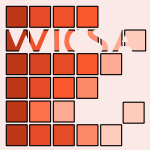 WICSA-2008-CimpanC #design pattern #question #reuse
WICSA-2008-CimpanC #design pattern #question #reuse- Can Styles Improve Architectural Pattern Reuse? (SC, VC), pp. 263–266.
 ASE-2008-GibbsBSDC #automation #question
ASE-2008-GibbsBSDC #automation #question- Living with the Law: Can Automation give us Moore with Less? (CG, JB, NS, MD, YC), pp. 395–398.
 ASE-2008-RobbesL #code completion #how #repository
ASE-2008-RobbesL #code completion #how #repository- How Program History Can Improve Code Completion (RR, ML), pp. 317–326.
 DAC-2008-MattsonW #parallel #programming #question
DAC-2008-MattsonW #parallel #programming #question- Parallel programming: can we PLEASE get it right this time? (TM, MW), pp. 7–11.
 DAC-2008-SparksWBLCPHR #industrial #what
DAC-2008-SparksWBLCPHR #industrial #what- Election year: what the electronics industry needs---and can expect---from the incoming administration (TS, PW, LB, RL, TC, CP, VH, CR), pp. 76–77.
 HT-2008-ChoudhurySJS08a #communication #correlation #process #question
HT-2008-ChoudhurySJS08a #communication #correlation #process #question- Can blog communication dynamics be correlated with stock market activity? (MDC, HS, AJ, DDS), pp. 55–60.
 HT-2008-JatowtKOT #documentation #interactive #modelling #towards #what
HT-2008-JatowtKOT #documentation #interactive #modelling #towards #what- What can history tell us?: towards different models of interaction with document histories (AJ, YK, HO, KT), pp. 5–14.
 CSEET-2008-Epstein #agile #how #process #student
CSEET-2008-Epstein #agile #how #process #student- Getting Students to Think About How Agile Processes can be Made More Secure (RGE), pp. 51–58.
 ICSM-2008-KagdiHM #question #source code
ICSM-2008-KagdiHM #question #source code- Who can help me with this source code change? (HHK, MH, JIM), pp. 157–166.
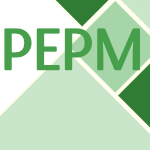 PEPM-2008-WarthDM #parsing #recursion
PEPM-2008-WarthDM #parsing #recursion- Packrat parsers can support left recursion (AW, JRD, TDM), pp. 103–110.
 IFL-2008-TellerSV #fault #lightweight #ml #performance #polymorphism #type safety
IFL-2008-TellerSV #fault #lightweight #ml #performance #polymorphism #type safety- Catch Me If You Can — Looking for Type-Safe, Hierarchical, Lightweight, Polymorphic and Efficient Error Management in OCaml (DT, AS, TV), pp. 249–271.
 CHI-2008-BachJST
CHI-2008-BachJST- You can touch, but you can’t look: interacting with in-vehicle systems (KMB, MGJ, MBS, NGT), pp. 1139–1148.
 CHI-2008-MatsuiY #algorithm #search-based
CHI-2008-MatsuiY #algorithm #search-based- Genetic algorithm can optimize hierarchical menus (SM, SY), pp. 1385–1388.
 CHI-2008-PetrelliWB #named #physics #question #what
CHI-2008-PetrelliWB #named #physics #question #what- AutoTypography: what can physical mementos tell us about digital memories? (DP, SW, JB), pp. 53–62.
 CSCW-2008-HsiehKHW #communication
CSCW-2008-HsiehKHW #communication- Can markets help?: applying market mechanisms to improve synchronous communication (GH, RK, SEH, RW), pp. 535–544.
 CSCW-2008-KitturSC #trust #wiki
CSCW-2008-KitturSC #trust #wiki- Can you ever trust a wiki?: impacting perceived trustworthiness in wikipedia (AK, BS, EHC), pp. 477–480.
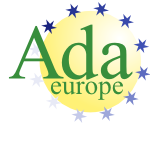 AdaEurope-2008-SinghoffPD #realtime #scheduling #usability
AdaEurope-2008-SinghoffPD #realtime #scheduling #usability- Can We Increase the Usability of Real Time Scheduling Theory? The Cheddar Project (FS, AP, PD), pp. 240–253.
 ICEIS-SAIC-2008-BninaCNA #question #trust #what
ICEIS-SAIC-2008-BninaCNA #question #trust #what- What Can Context Do for Trust in Manets? (EBB, OC, CTN, HKBA), pp. 133–141.
 CIKM-2008-AbelHK #folksonomy #question #ranking
CIKM-2008-AbelHK #folksonomy #question #ranking- Ranking in folksonomy systems: can context help? (FA, NH, DK), pp. 1429–1430.
 CIKM-2008-BischoffFNP #question
CIKM-2008-BischoffFNP #question- Can all tags be used for search? (KB, CSF, WN, RP), pp. 193–202.
 CIKM-2008-ZhuSYW #process #query #question
CIKM-2008-ZhuSYW #process #query #question- Can phrase indexing help to process non-phrase queries? (MZ, SS, NY, JRW), pp. 679–688.
 KDD-2008-MeloAL #behaviour #metric #network #predict #question
KDD-2008-MeloAL #behaviour #metric #network #predict #question- Can complex network metrics predict the behavior of NBA teams? (POSVdM, VAFA, AAFL), pp. 695–703.
 KR-2008-KontchakovWZ #difference #ontology #question
KR-2008-KontchakovWZ #difference #ontology #question- Can You Tell the Difference Between DL-Lite Ontologies? (RK, FW, MZ), pp. 285–295.
 RecSys-2008-AgrahriMR #people #question
RecSys-2008-AgrahriMR #people #question- Can people collaborate to improve the relevance of search results? (AKA, DATM, JR), pp. 283–286.
 OOPSLA-2008-SmithC #java #question #type inference
OOPSLA-2008-SmithC #java #question #type inference- Java type inference is broken: can we fix it? (DS, RC), pp. 505–524.
 RE-2008-Alexander #design #how #question #requirements #statistics
RE-2008-Alexander #design #how #question #requirements #statistics- Evaluating Design Options against Requirements: How Far Can Statistics Help? (IA), pp. 259–264.
 REFSQ-2008-RegnellBW #complexity #question #requirements #scalability
REFSQ-2008-RegnellBW #complexity #question #requirements #scalability- Can We Beat the Complexity of Very Large-Scale Requirements Engineering? (BR, RBS, KW), pp. 123–128.
 REFSQ-2008-StrohmaierHYAE #modelling
REFSQ-2008-StrohmaierHYAE #modelling- Can Patterns Improve i* Modeling? Two Exploratory Studies (MS, JH, ESKY, JA, SME), pp. 153–167.
 SAC-2008-FariaM #recognition #scalability #speech
SAC-2008-FariaM #recognition #scalability #speech- When a mismatch can be good: large vocabulary speech recognition trained with idealized tandem features (AF, NM), pp. 1574–1577.
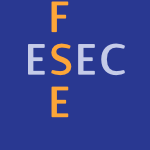 FSE-2008-PinzgerNM #developer #network #predict #question
FSE-2008-PinzgerNM #developer #network #predict #question- Can developer-module networks predict failures? (MP, NN, BM), pp. 2–12.
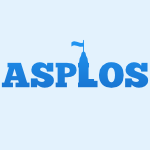 ASPLOS-2008-McCunePPRS #execution #how #recommendation
ASPLOS-2008-McCunePPRS #execution #how #recommendation- How low can you go?: recommendations for hardware-supported minimal TCB code execution (JMM, BP, AP, MKR, AS), pp. 14–25.
 TAP-2008-WeyukerO #fault #predict #question #what
TAP-2008-WeyukerO #fault #predict #question #what- What Can Fault Prediction Do for YOU? (EJW, TJO), pp. 18–29.
 DAC-2007-IrvineL #hardware #question
DAC-2007-IrvineL #hardware #question- Trusted Hardware: Can It Be Trustworthy? (CEI, KNL), pp. 1–4.
 DAC-2007-Levitan #graph #random
DAC-2007-Levitan #graph #random- You Can Get There From Here: Connectivity of Random Graphs on Grids (SPL), pp. 272–273.
 DAC-2007-PimentelP #analysis
DAC-2007-PimentelP #analysis- Experimental Jitter Analysis in a FlexCAN Based Drive-by-Wire Automotive Application (JRP, JP), pp. 290–293.
 DAC-2007-ZhouTLW #how #logic
DAC-2007-ZhouTLW #how #logic- How Much Can Logic Perturbation Help from Netlist to Final Routing for FPGAs (CLZ, WCT, WHL, YLW), pp. 922–927.
 ITiCSE-2007-LiffickZ
ITiCSE-2007-LiffickZ- You can take it with you: profile transportability (BWL, GMZ), pp. 106–110.
 ICSM-2007-StoreyCSMMR #how #navigation
ICSM-2007-StoreyCSMMR #how #navigation- How Programmers Can Turn Comments into Waypoints for Code Navigation (MADS, LTC, JS, MJM, DM, JR), pp. 265–274.
 MSR-2007-RigbyH #analysis #developer #what
MSR-2007-RigbyH #analysis #developer #what- What Can OSS Mailing Lists Tell Us? A Preliminary Psychometric Text Analysis of the Apache Developer Mailing List (PCR, AEH), p. 23.
 DLT-2007-Jez #boolean grammar
DLT-2007-Jez #boolean grammar- Conjunctive Grammars Can Generate Non-regular Unary Languages (AJ), pp. 242–253.
 LATA-2007-BaaderHP #automaton #exclamation #logic
LATA-2007-BaaderHP #automaton #exclamation #logic- SI! Automata Can Show PSPACE Results for Description Logics (FB, JH, RP), pp. 67–78.
 DHM-2007-SadasivanG #question
DHM-2007-SadasivanG #question- Can We Use Technology to Train Inspectors to Be More Systematic? (SS, AKG), pp. 959–968.
 HCI-AS-2007-Moallem #enterprise #how
HCI-AS-2007-Moallem #enterprise #how- Excellence in Ease of Use with Rich Functionality How Enterprise Software Applications with Rich Functionality Can Be Built to Excel in Ease of Use (AM), pp. 672–681.
 HCI-AS-2007-MutoI #how #user interface
HCI-AS-2007-MutoI #how #user interface- How New Technologies Can Help Create Better UI’s for Medical Devices (WHM, EWI), pp. 499–507.
 HCI-MIE-2007-GratchWOLMWM #question
HCI-MIE-2007-GratchWOLMWM #question- Can Virtual Humans Be More Engaging Than Real Ones? (JG, NW, AO, FL, MM, RJvdW, LPM), pp. 286–297.
 HCI-MIE-2007-Navarro-PrietoB #community #question #video
HCI-MIE-2007-Navarro-PrietoB #community #question #video- Can Video Support City-Based Communities? (RNP, NB), pp. 933–942.
 HIMI-IIE-2007-Quraishy #case study #design #health #how #implementation #information management
HIMI-IIE-2007-Quraishy #case study #design #health #how #implementation #information management- How Participation at Different Hierarchical Levels Can Have an Impact on the Design and Implementation of Health Information Systems at the Grass Root Level — A Case Study from India (ZBQ), pp. 128–136.
 RecSys-2007-Vuorikari #education #information retrieval #question #reuse #social
RecSys-2007-Vuorikari #education #information retrieval #question #reuse #social- Can social information retrieval enhance the discovery and reuse of digital educational content? (RV), pp. 207–210.
 OOPSLA-2007-KuhneS #multi #programming
OOPSLA-2007-KuhneS #multi #programming- Can programming be liberated from the two-level style: multi-level programming with deepjava (TK, DS), pp. 229–244.
 GPCE-2007-Puschel #education #library #performance #question
GPCE-2007-Puschel #education #library #performance #question- Can we teach computers to write fast libraries? (MP), pp. 1–2.
 REFSQ-2007-RinkeW #how #modelling #requirements
REFSQ-2007-RinkeW #how #modelling #requirements- Defining Reference Models for Modelling Qualities: How Requirements Engineering Techniques Can Help (TR, TW), pp. 335–340.
 ICSE-2007-HonidenTYTW #architecture #development #re-engineering #tool support
ICSE-2007-HonidenTYTW #architecture #development #re-engineering #tool support- Top SE: Educating Superarchitects Who Can Apply Software Engineering Tools to Practical Development in Japan (SH, YT, NY, KT, HW), pp. 708–718.
 ICSE-2007-MaidenNR #case study #experience #requirements
ICSE-2007-MaidenNR #case study #experience #requirements- Can Requirements Be Creative? Experiences with an Enhanced Air Space Management System (NAMM, CN, SR), pp. 632–641.
 CAV-2007-Kropf #debugging #development #formal method #industrial #question
CAV-2007-Kropf #debugging #development #formal method #industrial #question- Software Bugs Seen from an Industrial Perspective or Can Formal Methods Help on Automotive Software Development? (TK), p. 3.
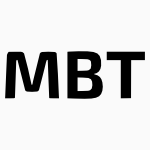 MBT-2007-BorodayPG #model checking #nondeterminism #question #testing
MBT-2007-BorodayPG #model checking #nondeterminism #question #testing- Can a Model Checker Generate Tests for Non-Deterministic Systems? (SB, AP, RG), pp. 3–19.
 QoSA-2006-Stafford #documentation
QoSA-2006-Stafford #documentation- Documentation Principles and Practices That You Can Live with (JAS), pp. 3–4.
 DAC-2006-YangCBDSK #question
DAC-2006-YangCBDSK #question- Entering the hot zone: can you handle the heat and be cool? (AY, RC, SB, JAD, SS, UK), pp. 174–175.
 DATE-2006-Shaver #architecture #deployment #generative
DATE-2006-Shaver #architecture #deployment #generative- Next generation architectures can dramatically reduce the 4G deployment cycle (DS), p. 599.
 DATE-DF-2006-CarvalhoPJF #algorithm #fault tolerance #implementation
DATE-DF-2006-CarvalhoPJF #algorithm #fault tolerance #implementation- A practical implementation of the fault-tolerant daisy-chain clock synchronization algorithm on CAN (FCC, CEP, ETSJ, EPdF), pp. 189–194.
 DATE-DF-2006-RichterE #challenge #how #integration #network
DATE-DF-2006-RichterE #challenge #how #integration #network- How OEMs and suppliers can face the network integration challenges (KR, RE), pp. 183–188.
 ITiCSE-2006-ChenLMSS #question #student #what
ITiCSE-2006-ChenLMSS #question #student #what- What do beginning students know, and what can they do? (TYC, GL, RM, KS, BS), p. 329.
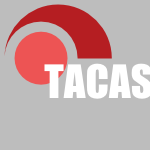 TACAS-2006-BolligKSS #named #specification
TACAS-2006-BolligKSS #named #specification- MSCan — A Tool for Analyzing MSC Specifications (BB, CK, MS, VS), pp. 455–458.
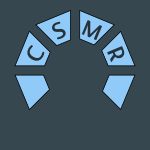 CSMR-2006-LormansD #design #question #requirements #traceability
CSMR-2006-LormansD #design #question #requirements #traceability- Can LSI help Reconstructing Requirements Traceability in Design and Test? (ML, AvD), pp. 47–56.
 ICPC-2006-LuciaFOT #effectiveness #information retrieval #question #traceability
ICPC-2006-LuciaFOT #effectiveness #information retrieval #question #traceability- Can Information Retrieval Techniques Effectively Support Traceability Link Recovery? (ADL, FF, RO, GT), pp. 307–316.
 STOC-2006-Impagliazzo #algorithm #question #random
STOC-2006-Impagliazzo #algorithm #question #random- Can every randomized algorithm be derandomized? (RI), pp. 373–374.
 DLT-2006-GurevichW #question #state machine
DLT-2006-GurevichW #question #state machine- Can Abstract State Machines Be Useful in Language Theory? (YG, CW), pp. 14–19.
 CHI-2006-NimwegenBOS #effectiveness
CHI-2006-NimwegenBOS #effectiveness- The paradox of the assisted user: guidance can be counterproductive (CvN, DDB, HvO, HS), pp. 917–926.
 CHI-2006-ZanbakaGH #gender #persuasion
CHI-2006-ZanbakaGH #gender #persuasion- Can a virtual cat persuade you?: the role of gender and realism in speaker persuasiveness (CAZ, PG, LFH), pp. 1153–1162.
 ECIR-2006-UrbanJ #image #problem #query #question #retrieval
ECIR-2006-UrbanJ #image #problem #query #question #retrieval- Can a Workspace Help to Overcome the Query Formulation Problem in Image Retrieval? (JU, JMJ), pp. 385–396.
 ICML-2006-ReyzinS #classification #complexity #how
ICML-2006-ReyzinS #classification #complexity #how- How boosting the margin can also boost classifier complexity (LR, RES), pp. 753–760.
 ICPR-v2-2006-ZhengYYW #classification #effectiveness #image #problem
ICPR-v2-2006-ZhengYYW #classification #effectiveness #image #problem- Effective classification image space which can solve small sample size problem (YJZ, JYY, JY, XW), pp. 861–864.
 POPL-2006-Odersky #component #empirical #question #scala
POPL-2006-Odersky #component #empirical #question #scala- The Scala experiment: can we provide better language support for component systems? (MO), pp. 166–167.
 SAC-2006-GuesmiR #design #embedded #implementation #realtime
SAC-2006-GuesmiR #design #embedded #implementation #realtime- Design and implementation of a real-time notification service within the context of embedded ORB and the CAN bus (TG, HR), pp. 773–777.
 SAT-2006-DantsinW #constant #performance #satisfiability
SAT-2006-DantsinW #constant #performance #satisfiability- MAX-SAT for Formulas with Constant Clause Density Can Be Solved Faster Than in O(s2) Time (ED, AW), pp. 266–276.
 DAC-2005-AminMKDCHI #analysis #how #question #statistics
DAC-2005-AminMKDCHI #analysis #how #question #statistics- Statistical static timing analysis: how simple can we get? (CSA, NM, KK, FD, UC, NH, YII), pp. 652–657.
 DAC-2005-ChowdharyRVCTPH #how #question
DAC-2005-ChowdharyRVCTPH #how #question- How accurately can we model timing in a placement engine? (AC, KR, SV, TC, VT, YP, BH), pp. 801–806.
 DAC-2005-Rossi #design #formal method #question #scalability #verification
DAC-2005-Rossi #design #formal method #question #scalability #verification- Can we really do without the support of formal methods in the verification of large designs? (UR), pp. 672–673.
 ICDAR-2005-MoussaZAB #classification
ICDAR-2005-MoussaZAB #classification- Can Fractal Dimension Be Used In Font Classification (SBM, AZ, AMA, AB), pp. 146–150.
 SIGMOD-2005-ChaudhuriKR #query #question #sql #trust
SIGMOD-2005-ChaudhuriKR #query #question #sql #trust- When Can We Trust Progress Estimators for SQL Queries? (SC, RK, RR), pp. 575–586.
 ITiCSE-2005-SternMH #how #student
ITiCSE-2005-SternMH #how #student- You can lead a horse to water: how students really use pedagogical software (LS, SM, RH), pp. 246–250.
 IWPC-2005-HouWH #framework #question #what
IWPC-2005-HouWH #framework #question #what- What Can Programmer Questions Tell Us About Frameworks? (DH, KW, HJH), pp. 87–96.
 STOC-2005-BenjaminiSW
STOC-2005-BenjaminiSW- Balanced boolean functions that can be evaluated so that every input bit is unlikely to be read (IB, OS, DBW), pp. 244–250.
 ICALP-2005-BorodinCM #algorithm #how #question
ICALP-2005-BorodinCM #algorithm #how #question- How Well Can Primal-Dual and Local-Ratio Algorithms Perform? (AB, DC, AM), pp. 943–955.
 ICEIS-v5-2005-Murano #effectiveness #feedback #user interface #why
ICEIS-v5-2005-Murano #effectiveness #feedback #user interface #why- Why Anthropomorphic User Interface Feedback can be Effective and Preferred by Users (PM), pp. 12–19.
 ECOOP-2005-GibbsLC #aspect-oriented #evolution #framework #question
ECOOP-2005-GibbsLC #aspect-oriented #evolution #framework #question- Sustainable System Infrastructure and Big Bang Evolution: Can Aspects Keep Pace? (CG, CRL, YC), pp. 241–261.
 ICSE-2005-Ayton #how
ICSE-2005-Ayton #how- Extending the discipline: how software can help or hinder human decision making (and vice-versa) (PA), p. 36.
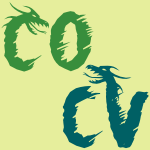 COCV-J-2005-Langmaack #question #reasoning #what
COCV-J-2005-Langmaack #question #reasoning #what- What Level of Mathematical Reasoning can Computer Science Demand of a Software Implementer? (HL), pp. 5–32.
 TLCA-2005-Hayashi #game studies #proving #question
TLCA-2005-Hayashi #game studies #proving #question- Can Proofs Be Animated By Games? (SH), pp. 11–22.
 DATE-DF-2004-Werner #quality #question
DATE-DF-2004-Werner #quality #question- Can IP Quality be Objectively Measured? (KW), pp. 330–331.
 DATE-v1-2004-CatthoorCMGLMSW #design #how #problem #question #scalability
DATE-v1-2004-CatthoorCMGLMSW #design #how #problem #question #scalability- How Can System-Level Design Solve the Interconnect Technology Scaling Problem? (FC, AC, GM, PG, RL, KM, PvdS, RW), pp. 332–339.
 CSEET-2004-SmithLL #java #question #re-engineering #realtime
CSEET-2004-SmithLL #java #question #re-engineering #realtime- Can Real-Time Software Engineering be Taught to Java Programmers? (SS, SWL, AL), pp. 124–129.
 ITiCSE-2004-BenayaZ #question #student
ITiCSE-2004-BenayaZ #question #student- Can students improve their undergraduate schievements and get accepted to graduate school? (TB, EZ), p. 246.
 ICEIS-v4-2004-MahmoodF #case study #evaluation
ICEIS-v4-2004-MahmoodF #case study #evaluation- Can Avatars Replace the Trainer? A Case Study Evaluation (AKM, EF), pp. 208–213.
 KDD-2004-NijssenK #difference #mining
KDD-2004-NijssenK #difference #mining- A quickstart in frequent structure mining can make a difference (SN, JNK), pp. 647–652.
 POPL-2004-Dal-ZilioLM #logic
POPL-2004-Dal-ZilioLM #logic- A logic you can count on (SDZ, DL, CM), pp. 135–146.
 FSE-2004-Marks #exclamation #problem #usability
FSE-2004-Marks #exclamation #problem #usability- The usability problem for home appliances: engineers caused it, engineers can fix it! (JM), p. 95.
 SPLC-2004-Geppert #development #how #product line #question #testing
SPLC-2004-Geppert #development #how #product line #question #testing- How Can Testing Keep Pace with Accelerated Development in Software Product Line Engineering? (CWK, BG), pp. 308–309.
 SPLC-2004-Krueger #product line #what
SPLC-2004-Krueger #product line #what- Product Line Binding Times: What You Don?t Know Can Hurt You (CWK), pp. 305–306.
 CAV-2004-Metzner #analysis #model checking #why
CAV-2004-Metzner #analysis #model checking #why- Why Model Checking Can Improve WCET Analysis (AM), pp. 334–347.
 CSEET-2003-BaileyCHW #question #student
CSEET-2003-BaileyCHW #question #student- Can We Influence Students? Attitudes About Inspections? Can We Measure a Change in Attitude? (DB, TC, BH, LLW), pp. 260–267.
 CHI-2003-Ho-ChingML #design #evaluation #what
CHI-2003-Ho-ChingML #design #evaluation #what- Can you see what i hear?: the design and evaluation of a peripheral sound display for the deaf (FWlHC, JM, JAL), pp. 161–168.
 EDOC-2003-FuentesPV #component #design #how
EDOC-2003-FuentesPV #component #design #how- How MDA Can Help Designing Component- and Aspect-based Applications (LF, MP, AV), pp. 124–135.
 ICEIS-v4-2003-StanojevicTV #named
ICEIS-v4-2003-StanojevicTV #named- FIDES — A Financial Decision Aid That Can Be Trusted (MS, VT, SV), pp. 103–110.
 ECIR-2003-HeeschR #feedback #image #question #retrieval #what
ECIR-2003-HeeschR #feedback #image #question #retrieval #what- Relevance Feedback for Content-Based Image Retrieval: What Can Three Mouse Clicks Achieve? (DH, SMR), pp. 363–376.
 SAC-2003-MernikGZB #parsing #question
SAC-2003-MernikGZB #parsing #question- Can a Parser be Generated from Examples? (MM, GG, VZ, BRB), pp. 1063–1067.
 ICSE-2003-Fairbanks #architecture #case study #developer #experience #modelling #why
ICSE-2003-Fairbanks #architecture #case study #developer #experience #modelling #why- Why Can’t They Create Architecture Models Like “Developer X”? An Experience Report (GF), pp. 548–552.
 SAT-2003-GoldbergN #how #question
SAT-2003-GoldbergN #how #question- How Good Can a Resolution Based SAT-solver Be? (EG, YN), pp. 37–52.
 TLCA-2003-Kahrs #source code
TLCA-2003-Kahrs #source code- Well-Going Programs Can Be Typed (SK), pp. 167–179.
 DAC-2002-CabodiCQ #bound #model checking #question #satisfiability
DAC-2002-CabodiCQ #bound #model checking #question #satisfiability- Can BDDs compete with SAT solvers on bounded model checking? (GC, PC, SQ), pp. 117–122.
 HT-2002-NguyenGM #documentation #hypermedia #version control
HT-2002-NguyenGM #documentation #hypermedia #version control- Versioned Hypermedia can improve software document management (TNN, SCG, EVM), pp. 192–193.
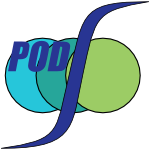 PODS-2002-ChuHG #optimisation #query #question #what
PODS-2002-ChuHG #optimisation #query #question #what- Least Expected Cost Query Optimization: What Can We Expect? (FCC, JYH, JG), pp. 293–302.
 ITiCSE-2002-Reges #c# #java #question
ITiCSE-2002-Reges #c# #java #question- Can C# replace java in CS1 and CS2? (SR), pp. 4–8.
 DLT-2002-UmeoK #automaton #communication #infinity #realtime #sequence
DLT-2002-UmeoK #automaton #communication #infinity #realtime #sequence- An Infinite Prime Sequence Can Be Generated in Real-Time by a 1-Bit Inter-cell Communication Cellular Automaton (HU, NK), pp. 339–348.
 ICGT-2002-Harel #behaviour #requirements #why
ICGT-2002-Harel #behaviour #requirements #why- Can Behavioral Requirements Be Executed? (And Why Would We Want to Do So?) (DH), pp. 6–7.
 CSCW-2002-GrassoM #question
CSCW-2002-GrassoM #question- Who can claim complete abstinence from peeking at print jobs? (AG, JLM), pp. 296–305.
 CSCW-2002-GrinterASTWH #comprehension #how
CSCW-2002-GrinterASTWH #comprehension #how- Revisiting the visit: : understanding how technology can shape the museum visit (REG, PMA, MHS, JDT, AW, AH), pp. 146–155.
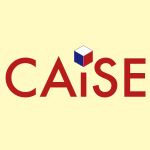 CAiSE-2002-LipsonMM #component #off the shelf #question
CAiSE-2002-LipsonMM #component #off the shelf #question- Can We Ever Build Survivable Systems from COTS Components? (HFL, NRM, APM), pp. 216–229.
 KDD-2002-JoshiAK #predict #question
KDD-2002-JoshiAK #predict #question- Predicting rare classes: can boosting make any weak learner strong? (MVJ, RCA, VK), pp. 297–306.
 SEKE-2002-Briand #information management #on the #re-engineering
SEKE-2002-Briand #information management #on the #re-engineering- On the many ways software engineering can benefit from knowledge engineering (LCB), pp. 3–6.
 OOPSLA-2002-KawachiyaKO #java
OOPSLA-2002-KawachiyaKO #java- Lock reservation: Java locks can mostly do without atomic operations (KK, AK, TO), pp. 130–141.
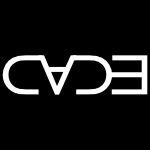 CADE-2002-BorrallerasLR #order #recursion
CADE-2002-BorrallerasLR #order #recursion- Recursive Path Orderings Can Be Context-Sensitive (CB, SL, AR), pp. 314–331.
 WICSA-2001-Kozaczynski #architecture #question
WICSA-2001-Kozaczynski #architecture #question- Is Architecture a Product that Can Be Packaged and Sold? (WK), p. 3–?.
 STOC-2001-Valiant #polynomial #quantum
STOC-2001-Valiant #polynomial #quantum- Quantum computers that can be simulated classically in polynomial time (LGV), pp. 114–123.
 AdaEurope-2001-BrosgolD #java #question #realtime
AdaEurope-2001-BrosgolD #java #question #realtime- Can Java Meet Its Real-Time Deadlines? (BMB, BD), pp. 68–87.
 CIKM-2001-Rosenthal #documentation #question #security #what
CIKM-2001-Rosenthal #documentation #question #security #what- What Can Researches Do to Improve Security of Data and Documents? (AR), p. 593.
 KDD-2001-PadmanabhanZK #personalisation #semistructured data #what
KDD-2001-PadmanabhanZK #personalisation #semistructured data #what- Personalization from incomplete data: what you don’t know can hurt (BP, Z(Z, SOK), pp. 154–163.
 TOOLS-USA-2001-McClure #how #privacy #security
TOOLS-USA-2001-McClure #how #privacy #security- Hacking = Privacy: How Computer Hacking Can Shore Up Your Defenses and Deliver the Closest Ideal to Security Available (SM), p. 7.
 ICLP-2001-RochaSC #on the
ICLP-2001-RochaSC #on the- On a Tabling Engine That Can Exploit Or-Parallelism (RR, FMAS, VSC), pp. 43–58.
 DAC-2000-CaldwellKM #question #recursion
DAC-2000-CaldwellKM #question #recursion- Can recursive bisection alone produce routable placements? (AEC, ABK, ILM), pp. 477–482.
 ITiCSE-2000-Klassner #development #question #web
ITiCSE-2000-Klassner #development #question #web- Can Web development courses avoid obsolescence? (FK), pp. 77–80.
 ICSM-2000-SahraouiGM #automation #design #metric #object-oriented #quality #question
ICSM-2000-SahraouiGM #automation #design #metric #object-oriented #quality #question- Can Metrics Help to Bridge the Gap between the Improvement of OO Design Quality and its Automation? (HAS, RG, TM), pp. 154–162.
 CSCW-2000-Bernstein #how #process #tool support
CSCW-2000-Bernstein #how #process #tool support- How can cooperative work tools support dynamic group process? bridging the specificity frontier (AB), pp. 279–288.
 ICEIS-2000-GoncalvesA #database #quote
ICEIS-2000-GoncalvesA #database #quote- “Decision Can”: A Database of Decision Cases (NMVPG, PA), pp. 139–143.
 ICEIS-2000-Seddon #case study #framework #multi #question
ICEIS-2000-Seddon #case study #framework #multi #question- Case Study: Can a Multi Terabyte Data Warehouse Be Built on a ORACLE/UNIX Platform? (DS), p. XLV.
 KDD-2000-PeiH #constraints #mining #question
KDD-2000-PeiH #constraints #mining #question- Can we push more constraints into frequent pattern mining? (JP, JH), pp. 350–354.
 KR-2000-DimopoulosNT
KR-2000-DimopoulosNT- Finding Admissible and Preferred Arguments Can be Very Hard (YD, BN, FT), pp. 53–61.
 ICSE-2000-Edwards #online #quality #question #re-engineering
ICSE-2000-Edwards #online #quality #question #re-engineering- Can quality graduate software engineering courses really be delivered asynchronously on-line? (SE), pp. 676–679.
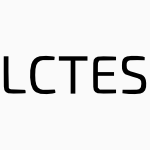 LCTES-2000-BelloM #network #scheduling
LCTES-2000-BelloM #network #scheduling- Randomization-Based Approaches for Dynamic Priority Scheduling of Aperiodic Messages on a CAN Network (LLB, OM), pp. 1–18.
 LCTES-2000-JeonKHK #corba #embedded #fault tolerance
LCTES-2000-JeonKHK #corba #embedded #fault tolerance- A Fault Tolerance Extension to the Embedded CORBA for the CAN Bus Systems (GJ, THK, SH, SK), pp. 114–133.
 ASE-1999-FuchsST #first-order #logic #natural language
ASE-1999-FuchsST #first-order #logic #natural language- Controlled Natural Language Can Replace First-Order Logic (NEF, US, ST), pp. 295–298.
 VLDB-1999-JagadishLS #question #what
VLDB-1999-JagadishLS #question #what- What can Hierarchies do for Data Warehouses? (HVJ, LVSL, DS), pp. 530–541.
 VLDB-1999-Pound
VLDB-1999-Pound- In Cyber Space No One can Hear You Scream (CP), pp. 207–210.
 HCI-CCAD-1999-BoschianLDMJ #artificial reality #how #people #question
HCI-CCAD-1999-BoschianLDMJ #artificial reality #how #people #question- How can people with disabilities navigate in virtual reality with an input device they can use? (KB, AL, RCD, UM, GJ), pp. 1111–1115.
 HCI-EI-1999-AarasRH
HCI-EI-1999-AarasRH- Can a more neutral position and support of the forearms at the Table top reduce pain for VDU operators. Laboratory and field studies (AA, OR, GH), pp. 51–55.
 CIKM-1999-Giles #question #web #what
CIKM-1999-Giles #question #web #what- Searching the Web: Can You Find What You Want? (CLG), pp. 1–2.
 KDD-T-1999-GehrkeLR #classification
KDD-T-1999-GehrkeLR #classification- Classification and Regression: Money *can* Grow on Trees (JG, WYL, RR), pp. 1–73.
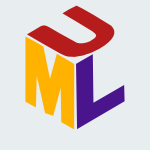 UML-1999-MillerW #classification #how #question
UML-1999-MillerW #classification #how #question- How Can Anything be Both a Classifier and a Package? (JM, RWB), pp. 584–597.
 TOOLS-ASIA-1999-Al-AhmadS #inheritance #modelling #reuse
TOOLS-ASIA-1999-Al-AhmadS #inheritance #modelling #reuse- Modeling and Reuse Perspectives of Inheritance Can be Reconciled (WAA, ES), pp. 31–40.
 TOOLS-PACIFIC-1999-SchmolitzkyEKM #how #question #type safety
TOOLS-PACIFIC-1999-SchmolitzkyEKM #how #question #type safety- How Can Covariance in Pragmatical Class Methods be Made Statically Type-Safe? (AS, ME, JLK, GM), pp. 200–209.
 CAV-1999-Brinksma #consistency #formal method #testing
CAV-1999-Brinksma #consistency #formal method #testing- Formal Methods for Conformance Testing: Theory Can Be Practical (EB), pp. 44–45.
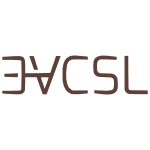 CSL-1999-Franzle #analysis #hybrid #infinity
CSL-1999-Franzle #analysis #hybrid #infinity- Analysis of Hybrid Systems: An Ounce of Realism Can Save an Infinity of States (MF), pp. 126–140.
 VLDB-1998-BlottKS #communication #how #question #what
VLDB-1998-BlottKS #communication #how #question #what- Information, Communication, and Money: For What Can We Charge and How Can We Meter It? (SB, HFK, AS), p. 697.
 ICSM-1998-KhoshgoftaarA #quality #question
ICSM-1998-KhoshgoftaarA #quality #question- Can a Software Quality Model Hit a Moving Target? (TMK, EBA), pp. 68–70.
 CHI-1998-Rocco #trust
CHI-1998-Rocco #trust- Trust Breaks Down in Electronic Contexts But Can Be Repaired by Some Initial Face-to-Face Contact (ER), pp. 496–502.
 CHI-1998-WalkerFFMH #email #interface #what
CHI-1998-WalkerFFMH #email #interface #what- What can I say? Evaluating a Spoken Language Interface to Email (MAW, JF, GDF, CM, DH), pp. 582–589.
 AdaEurope-1998-EmeryMN #ada #automation #how #process #question
AdaEurope-1998-EmeryMN #ada #automation #how #process #question- Automating the Ada Binding Process for Java- How Far Can We Go? (DEE, RFM, KAN), pp. 29–40.
 KR-1998-Karlsson #reasoning
KR-1998-Karlsson #reasoning- Anything Can Happen: On Narratives and Hypothetical Reasoning (LK), pp. 36–47.
 KR-1998-Levesque98a #what
KR-1998-Levesque98a #what- What Robots Can Do (HJL), p. 651.
 TOOLS-USA-1998-Meyer #component #question
TOOLS-USA-1998-Meyer #component #question- Can We Make Componentware Succeed? (BM), p. 3.
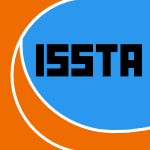 ISSTA-1998-Hamlet #question #testing #what
ISSTA-1998-Hamlet #question #testing #what- What Can We Learn by Testing a Program? (RGH), pp. 50–52.
 ITiCSE-1997-FeldmanB #concurrent #education #programming
ITiCSE-1997-FeldmanB #concurrent #education #programming- Concurrent programming CAN be introduced into the lower-level undergraduate curriculum (MBF, BDB), pp. 77–79.
 ITiCSE-1997-Moser #game studies #learning #what #why
ITiCSE-1997-Moser #game studies #learning #what #why- A fantasy adventure game as a learning environment: why learning to program is so difficult and what can be done about it (RM), pp. 114–116.
 WPC-1997-Sayyad-ShirabadLL #comprehension #towards
WPC-1997-Sayyad-ShirabadLL #comprehension #towards- A Little Knowledge Can Go a Long Way Towards Program Understanding (JSS, TCL, SL), pp. 111–117.
 SAS-1997-Harrison #abstract interpretation #compilation
SAS-1997-Harrison #abstract interpretation #compilation- Can Abstract Interpretation Become a Mainstream Compiler Technology? (Abstract) (LH), p. 395.
 HCI-SEC-1997-ArcherAR #question
HCI-SEC-1997-ArcherAR #question- Software Durability — Is it Important? Can it be Achieved? (SGA, LA, CR), pp. 593–596.
 HCI-SEC-1997-PedraliB #analysis #process #question
HCI-SEC-1997-PedraliB #analysis #process #question- Can We Trace Back Cognitive Processes in Root Cause Analysis? (MP, RB), pp. 59–62.
 AdaEurope-1997-GellerichP #alias #problem
AdaEurope-1997-GellerichP #alias #problem- : Parameter-Induced Aliasing and Related Problems can be Avoided (WG, EP), pp. 161–172.
 EDOC-1997-ThissenLL #corba #data transfer #enterprise #industrial #question #requirements
EDOC-1997-ThissenLL #corba #data transfer #enterprise #industrial #question #requirements- Can CORBA Fulfill Data Transfer Requirements of Industrial Enterprises? (DT, CLP, SL), p. 129–?.
 ICML-1997-SchefferGD #why
ICML-1997-SchefferGD #why- Why Experimentation can be better than “Perfect Guidance” (TS, RG, CD), pp. 331–339.
 ECOOP-1997-OnoderaN #optimisation #smalltalk
ECOOP-1997-OnoderaN #optimisation #smalltalk- Optimizing Smalltalk by Selector Code INdexing Can Be Practical (TO, HN), pp. 302–323.
 RE-1997-Miller #how #question #requirements #research
RE-1997-Miller #how #question #requirements #research- How Can Requirements Engineering Research Become Requirements Engineering Practice? (SM), p. 260.
 CSCW-1996-Yankelovich #collaboration #education #how #internet #tutorial
CSCW-1996-Yankelovich #collaboration #education #how #internet #tutorial- An Introduction to the Internet and How it can be Used for Collaboration for K-12 Teachers (Tutorial) (NY), p. 3.
 ICPR-1996-AasEM #automation
ICPR-1996-AasEM #automation- Automatic can separation (KA, LE, OM), pp. 954–958.
 ICPR-1996-PlamondonG #question #segmentation #why
ICPR-1996-PlamondonG #question #segmentation #why- Why handwriting segmentation can be misleading? (RP, WG), pp. 396–400.
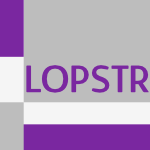 LOPSTR-1996-BossiC #termination
LOPSTR-1996-BossiC #termination- Replacement Can Preserve Termination (AB, NC), pp. 104–129.
 ICRE-1996-Brackett #requirements
ICRE-1996-Brackett #requirements- Ripe Fruit in Requirements Engineering: Techniques You Can Exploit NOW (JWB), pp. 42–43.
 CADE-1996-Scott #automation #deduction #what
CADE-1996-Scott #automation #deduction #what- What Can We Hope to Achieve From Automated Deduction? (Abstract) (DSS), p. 245.
 CSL-1996-Malecki #proving
CSL-1996-Malecki #proving- Proofs in System Fω Can Be Done in System Fω¹ (SM), pp. 297–315.
 SIGIR-1995-Riloff #classification #difference #word
SIGIR-1995-Riloff #classification #difference #word- Little Words Can Make a Big Difference for Text Classification (ER), pp. 130–136.
 OOPSLA-1995-LangeN #comprehension #design pattern #framework #interactive #visualisation
OOPSLA-1995-LangeN #comprehension #design pattern #framework #interactive #visualisation- Interactive Visualization of Design Patterns Can Help in Framework Understanding (DBL, YN), pp. 342–357.
 HT-ECHT-1994-Brown #hypermedia #network #question
HT-ECHT-1994-Brown #hypermedia #network #question- Adding Networking to Hypertext: Can it be Done Transparently? (PJB), pp. 51–58.
 PODS-1994-ChaudhuriK #approximate #datalog #question
PODS-1994-ChaudhuriK #approximate #datalog #question- Can Datalog be Approximated? (SC, PGK), pp. 86–96.
 VLDB-1994-Lesk #how #image #library
VLDB-1994-Lesk #how #image #library- Experiments on Access to Digital Libraries: How can Images and Text be Used Together (ML), pp. 655–667.
 TAGT-1994-CourcelleS #graph #set
TAGT-1994-CourcelleS #graph #set- The Obstructions of a Minor-Closed Set of Graphs Defined by Hyperedge Replacement can be Constructed (BC, GS), pp. 351–367.
 KR-1994-Gotts #how #using
KR-1994-Gotts #how #using- How Far Can We “C”? Defining a “Doughnut” Using Connection Alone (NMG), pp. 246–257.
 STOC-1993-BorodinRSU #hardware #how #question
STOC-1993-BorodinRSU #hardware #how #question- How much can hardware help routing? (AB, PR, BS, EU), pp. 573–582.
 STOC-1993-NaorS #question #what
STOC-1993-NaorS #question #what- What can be computed locally? (MN, LJS), pp. 184–193.
 HCI-SHI-1993-SaitoN #algebra #comprehension #visual notation
HCI-SHI-1993-SaitoN #algebra #comprehension #visual notation- An Algebraic System that Symbolic Expressions Can Interact with Graphical Representations for Understanding Mathematics (HS, MN), pp. 267–272.
 ICML-1993-RendersBS #adaptation #black box #how
ICML-1993-RendersBS #adaptation #black box #how- Adaptive NeuroControl: How Black Box and Simple can it be (JMR, HB, MS), pp. 260–267.
 SIGMOD-1992-Rosenthal #what
SIGMOD-1992-Rosenthal #what- What Can We Do to Strengthen the Connection Between Theory and System Builders (AR), p. 101.
 STOC-1992-Ben-David #detection #finite #question
STOC-1992-Ben-David #detection #finite #question- Can Finite Samples Detect Singularities of Real-Valued Functions? (SBD), pp. 390–399.
 TRI-Ada-C-1992-Beidler #component #education #tool support #what
TRI-Ada-C-1992-Beidler #component #education #tool support #what- Building on the Booch Components: What Can Be Learned When Modifying Real World Software Tools for Educational Use (JB), pp. 157–164.
 TRI-Ada-C-1992-Fussichen #ada #cics #exclamation
TRI-Ada-C-1992-Fussichen #ada #cics #exclamation- Ada and CICS: or (yes! Ada can be done on an IBM Mainframe) (KF), pp. 415–422.
 OOPSLA-1992-MasuharaMWY #concurrent #object-oriented
OOPSLA-1992-MasuharaMWY #concurrent #object-oriented- Object-Oriented Concurrent Reflective Languages can be Implemented Efficiently (HM, SM, TW, AY), pp. 127–144.
 TOOLS-PACIFIC-1992-Goldberg #object-oriented #question #using
TOOLS-PACIFIC-1992-Goldberg #object-oriented #question #using- Can A Manager Be Successful Using Object-Oriented Technology? (AG), p. 3.
 CAV-1992-Lamport #verification
CAV-1992-Lamport #verification- Computer-Hindered Verification (Humans Can Do It Too) (LL), p. 1.
 WSA-1991-Ameur #functional
WSA-1991-Ameur #functional- Non Functional Properties Can Guide Program Developments (YAA), pp. 189–196.
 CAiSE-1991-SeppanenHL #design #named #tool support #towards
CAiSE-1991-SeppanenHL #design #named #tool support #towards- SPADE — Towards Case Tools That Can Guide Design (VS, MH, RL), pp. 222–239.
 TOOLS-USA-1991-Goldberg #named #object-oriented #question #using
TOOLS-USA-1991-Goldberg #named #object-oriented #question #using- Keynote: Can a Manager Be Successful Using Object-Oriented Technology? (AG), p. 5.
 PLILP-1991-GrahamK #functional #imperative
PLILP-1991-GrahamK #functional #imperative- Domesticating Imperative Constructs So That They Can Live in a Functional World (TCNG, GK), pp. 51–62.
 ICLP-1991-BrissetR #linear
ICLP-1991-BrissetR #linear- Naïve Reverse Can be Linear (PB, OR), pp. 857–870.
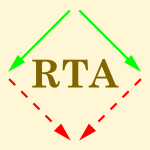 RTA-1991-BaaderN #algebra #commutative #equation #how #morphism #unification
RTA-1991-BaaderN #algebra #commutative #equation #how #morphism #unification- Adding Homomorphisms to Commutative/Monoidal Theories or How Algebra Can Help in Equational Unification (FB, WN), pp. 124–135.
 STOC-1990-GilHW #constant
STOC-1990-GilHW #constant- Not All Keys Can Be Hashed in Constant Time (Preliminary Version) (JYG, FMadH, AW), pp. 244–253.
 ICALP-1990-CheriyanHM #question
ICALP-1990-CheriyanHM #question- Can A Maximum Flow be Computed on o(nm) Time? (JC, TH, KM), pp. 235–248.
 CHI-1990-Winograd #education #human-computer #interactive #what
CHI-1990-Winograd #education #human-computer #interactive #what- What can we teach about human-computer interaction? (plenary address) (TW), pp. 443–448.
 CSCW-1990-MaloneC #coordination #design #how #question #what
CSCW-1990-MaloneC #coordination #design #how #question #what- What is Coordination Theory and How Can It Help Design Cooperative Work Systems? (TWM, KC), pp. 357–370.
 SEKE-1990-VolovikMT #re-engineering #what
SEKE-1990-VolovikMT #re-engineering #what- What Software Engineering Can Learn From Practitioners (DV, RM, WTT), pp. 216–221.
 ICSE-1990-Maiocchi #named #question #re-engineering #source code
ICSE-1990-Maiocchi #named #question #re-engineering #source code- Reengineering: Can a Program Put Intelligence in Stupid Programs? (MM), pp. 123–124.
 DAC-1989-KollaritschLMSS #design #representation
DAC-1989-KollaritschLMSS #design #representation- A Unified Design Representation Can Work (PK, SL, DM, DS, PS), pp. 811–813.
 PODS-1989-Wang #maintenance #question
PODS-1989-Wang #maintenance #question- Can Constant-time Maintainability Be More Practical? (KW), pp. 120–127.
 ICALP-1989-BrassardC #bound
ICALP-1989-BrassardC #bound- Everything in NP can be Argued in Perfect Zero-Knowledge in a Bounded Number of Rounds (GB, CC, MY), pp. 123–136.
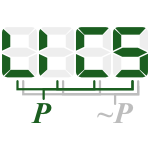 LICS-1989-Pitts #polymorphism #type system
LICS-1989-Pitts #polymorphism #type system- Non-trivial Power Types Can’t Be Subtypes of Polymorphic Types (AMP), pp. 6–13.
 NACLP-1989-SinghalP #how #parallel #question #unification
NACLP-1989-SinghalP #how #parallel #question #unification- Unification Parallelism: How Much Can We Exploit? (AS, YNP), pp. 1135–1147.
 CSCW-1988-BermannT #network #question
CSCW-1988-BermannT #network #question- Can Networks Make an Organization? (TB, KT), pp. 153–166.
 POPL-1988-BloomIM #bisimulation
POPL-1988-BloomIM #bisimulation- Bisimulation Can’t Be Traced (BB, SI, ARM), pp. 229–239.
 LICS-1988-Bloom #modelling #λ-calculus
LICS-1988-Bloom #modelling #λ-calculus- Can LCF Be Topped? Flat Lattice models of Typed λ Calculus (Preliminary Report) (BB), pp. 282–295.
 HCI-CE-1987-Soloway #specification #what
HCI-CE-1987-Soloway #specification #what- I Can’t Tell What in the Code Implements What in the Specs (ES), pp. 317–328.
 POPL-1987-TannenM
POPL-1987-TannenM- Computable Values Can Be Classical (VT, ARM), pp. 238–245.
 STOC-1986-GoldwasserK
STOC-1986-GoldwasserK- Almost All Primes Can Be Quickly Certified (SG, JK), pp. 316–329.
 DAC-1982-Adshead #algorithm #complexity #hardware #problem #question #scalability #towards
DAC-1982-Adshead #algorithm #complexity #hardware #problem #question #scalability #towards- Towards VLSI complexity: The DA algorithm scaling problem: can special DA hardware help? (HGA), pp. 339–344.
 SIGMOD-1981-Sagiv #question #using
SIGMOD-1981-Sagiv #question #using- Can We Use the Universal Instance Assumption Without Using Nulls? (YS), pp. 108–120.
 STOC-1980-CarlsonS #graph
STOC-1980-CarlsonS #graph- Graph Pebbling with Many Free Pebbles can be Difficult (DAC, JES), pp. 326–332.
 DAC-1979-Hightower #design #problem
DAC-1979-Hightower #design #problem- Can CAD meet the VLSI design problems of the 80’s (DWH), pp. 552–553.
 DAC-1979-Larsen #design #problem #question
DAC-1979-Larsen #design #problem #question- Can CAD meet the VLSI design problems of the 80’s? (RPL), p. 551.
 STOC-1979-Valiant
STOC-1979-Valiant- Negation Can Be Exponentially Powerful (LGV), pp. 189–196.
 ICALP-1978-PriceW #stack
ICALP-1978-PriceW #stack- States Can Sometimes Do More Than Stack Symbols in PDA’s (JKP, DW), pp. 353–362.
 ICSE-1976-Fabry #design #how #on the fly
ICSE-1976-Fabry #design #how #on the fly- How to Design a System in Which Modules Can Be Changed on the Fly (RSF), pp. 470–476.
 ICALP-1972-Bohm #question #syntax
ICALP-1972-Bohm #question #syntax- Can Syntax Be Ignored during Translation? (CB, MDC), pp. 197–207.
 CASE-2015-ZhangTYL #assessment #markov #reliability #using
CASE-2015-ZhangTYL #assessment #markov #reliability #using DATE-2015-HerberRWH #realtime #scheduling #using
DATE-2015-HerberRWH #realtime #scheduling #using DATE-2015-TangXLLCWY #network #question
DATE-2015-TangXLLCWY #network #question SIGMOD-2015-CSKZYRPAKDRD #big data #industrial #what #why
SIGMOD-2015-CSKZYRPAKDRD #big data #industrial #what #why SIGMOD-2015-RablDFSJ #big data
SIGMOD-2015-RablDFSJ #big data ICSME-2015-PanichellaSGVCG #evolution #how #maintenance
ICSME-2015-PanichellaSGVCG #evolution #how #maintenance SCAM-2015-LemosPSL #code search #query #question #scalability
SCAM-2015-LemosPSL #code search #query #question #scalability STOC-2015-HalldorssonT #graph #how #question
STOC-2015-HalldorssonT #graph #how #question ICFP-2015-Russo #functional #haskell
ICFP-2015-Russo #functional #haskell CHI-2015-JohnsonRMT #collaboration #how
CHI-2015-JohnsonRMT #collaboration #how CHI-2015-SamsonovTSKH #towards
CHI-2015-SamsonovTSKH #towards CHI-2015-Vicencio-Moreira #game studies
CHI-2015-Vicencio-Moreira #game studies CHI-2015-WarshawMWKBS #algorithm #comprehension #people
CHI-2015-WarshawMWKBS #algorithm #comprehension #people CHI-2015-ZhangAK #how #question #what #why
CHI-2015-ZhangAK #how #question #what #why CSCW-2015-Anya #design #exclamation #question #what
CSCW-2015-Anya #design #exclamation #question #what DUXU-UI-2015-Passera #contract #design #how
DUXU-UI-2015-Passera #contract #design #how LCT-2015-BajajHKPSDY #question #word
LCT-2015-BajajHKPSDY #question #word LCT-2015-CulenPSC #game studies #motivation #question
LCT-2015-CulenPSC #game studies #motivation #question ICEIS-v1-2015-Mocker #complexity #how
ICEIS-v1-2015-Mocker #complexity #how ICEIS-v2-2015-FissaaGHN #composition #how #question #semantics
ICEIS-v2-2015-FissaaGHN #composition #how #question #semantics ICEIS-v2-2015-SarinhoLS #dataset #linked data #open data #question
ICEIS-v2-2015-SarinhoLS #dataset #linked data #open data #question ECIR-2015-ZucconKP #effectiveness #self
ECIR-2015-ZucconKP #effectiveness #self ICML-2015-AnBB #how #linear #network #question
ICML-2015-AnBB #how #linear #network #question OOPSLA-2015-ToffolaPG #dynamic analysis #performance #problem
OOPSLA-2015-ToffolaPG #dynamic analysis #performance #problem POPL-2015-VafeiadisBCMN #compilation #memory management #optimisation #what
POPL-2015-VafeiadisBCMN #compilation #memory management #optimisation #what ESEC-FSE-2015-AcherBCBJ #product line
ESEC-FSE-2015-AcherBCBJ #product line ICSE-v1-2015-MorenoBPOM #how #question
ICSE-v1-2015-MorenoBPOM #how #question ICSE-v2-2015-AndersonHVWCBG #student
ICSE-v2-2015-AndersonHVWCBG #student PLEASE-2015-ChitchyanNG #product line #re-engineering #what
PLEASE-2015-ChitchyanNG #product line #re-engineering #what ICST-2015-ArltMPW #dependence #testing
ICST-2015-ArltMPW #dependence #testing ICST-2015-ZhangAC #exclamation #model checking #verification
ICST-2015-ZhangAC #exclamation #model checking #verification WRLA-2014-AlrahmanABL #concurrent #maude #memory management #modelling #question #source code
WRLA-2014-AlrahmanABL #concurrent #maude #memory management #modelling #question #source code SAS-2014-AbdullaHH #exclamation #verification
SAS-2014-AbdullaHH #exclamation #verification FLOPS-2014-Parys #how #question
FLOPS-2014-Parys #how #question ICALP-v1-2014-MancinskaV #bound #probability
ICALP-v1-2014-MancinskaV #bound #probability IFM-2014-BruniSNN #analysis #protocol #security
IFM-2014-BruniSNN #analysis #protocol #security CHI-2014-DiSalvoLLJK #design #how #human-computer #matter
CHI-2014-DiSalvoLLJK #design #how #human-computer #matter CHI-2014-GreisAHM
CHI-2014-GreisAHM CHI-2014-ShayKDHMSUBCC #question
CHI-2014-ShayKDHMSUBCC #question CSCW-2014-LiaoF
CSCW-2014-LiaoF CSCW-2014-Rooksby #question
CSCW-2014-Rooksby #question CSCW-2014-VitakK #facebook #how #people #process #quote
CSCW-2014-VitakK #facebook #how #people #process #quote DUXU-DI-2014-EstupinanRNFD #artificial reality #case study
DUXU-DI-2014-EstupinanRNFD #artificial reality #case study DUXU-DI-2014-Hellweg #development #education #future of #game studies #what
DUXU-DI-2014-Hellweg #development #education #future of #game studies #what DUXU-DP-2014-BuchdidPB #aspect-oriented #persuasion
DUXU-DP-2014-BuchdidPB #aspect-oriented #persuasion HCI-AIMT-2014-ErikssonLSSK #interface #question
HCI-AIMT-2014-ErikssonLSSK #interface #question HCI-AS-2014-MurrayWHSMGBTSCSH #animation #interactive #people #physics #process #question
HCI-AS-2014-MurrayWHSMGBTSCSH #animation #interactive #people #physics #process #question HCI-TMT-2014-MattosPP #identification #interactive
HCI-TMT-2014-MattosPP #identification #interactive SCSM-2014-Fu #microblog #network #social
SCSM-2014-Fu #microblog #network #social HILT-2014-Crocker #c++ #question
HILT-2014-Crocker #c++ #question CIKM-2014-HassanFVDL0
CIKM-2014-HassanFVDL0 KEOD-2014-GonenFEBWZP #how #maintenance #modelling #ontology #question
KEOD-2014-GonenFEBWZP #how #maintenance #modelling #ontology #question KEOD-2014-Kraines #ontology #order #question #semantics #similarity
KEOD-2014-Kraines #ontology #order #question #semantics #similarity SAC-2014-RockiBS #abstraction #future of #performance #programming #question
SAC-2014-RockiBS #abstraction #future of #performance #programming #question SLE-2014-SloaneRH #how
SLE-2014-SloaneRH #how SPLC-2014-Reinhartz-Berger #automation #domain model #modelling
SPLC-2014-Reinhartz-Berger #automation #domain model #modelling OSDI-2014-YuanLZRZZJS #analysis #data-driven #distributed #testing
OSDI-2014-YuanLZRZZJS #analysis #data-driven #distributed #testing IJCAR-2014-Cortier #how #logic
IJCAR-2014-Cortier #how #logic DAC-2013-KrishnaswamyBP #question
DAC-2013-KrishnaswamyBP #question DATE-2013-Mitcheson #adaptation #energy #performance #question
DATE-2013-Mitcheson #adaptation #energy #performance #question ICDAR-2013-KhanKS #identification #problem #question #verification
ICDAR-2013-KhanKS #identification #problem #question #verification SIGMOD-2013-MullerKLM #named #what
SIGMOD-2013-MullerKLM #named #what CSEET-2013-NobleHBB #design #education #programming language #question #re-engineering
CSEET-2013-NobleHBB #design #education #programming language #question #re-engineering FASE-2013-BongiovanniH #protocol
FASE-2013-BongiovanniH #protocol ICSM-2013-OyetoyanCC #component #question #refactoring
ICSM-2013-OyetoyanCC #component #question #refactoring ICALP-v2-2013-BecchettiBDKM #bound #complexity #convergence #proving
ICALP-v2-2013-BecchettiBDKM #bound #complexity #convergence #proving CHI-2013-AceitunoCR #how
CHI-2013-AceitunoCR #how CHI-2013-AnnettB #exclamation #gesture #symmetry
CHI-2013-AnnettB #exclamation #gesture #symmetry CHI-2013-FaresFK #question
CHI-2013-FaresFK #question CHI-2013-RauARR #design #interactive #learning #why
CHI-2013-RauARR #design #interactive #learning #why CHI-2013-YangPCLNC #design #developer #development #exclamation #tool support
CHI-2013-YangPCLNC #design #developer #development #exclamation #tool support CSCW-2013-PanLCL #process #social #what
CSCW-2013-PanLCL #process #social #what DUXU-CXC-2013-MouraVCBSTLK #exclamation #game studies #how #learning #mobile
DUXU-CXC-2013-MouraVCBSTLK #exclamation #game studies #how #learning #mobile DUXU-CXC-2013-Stevens #behaviour #gamification #how #social
DUXU-CXC-2013-Stevens #behaviour #gamification #how #social DUXU-PMT-2013-Matthiessen #design #education #experience #industrial #interactive #what
DUXU-PMT-2013-Matthiessen #design #education #experience #industrial #interactive #what HCI-AMTE-2013-McDougallR #predict
HCI-AMTE-2013-McDougallR #predict HIMI-D-2013-KastlerS #experience #image #interactive #question #user interface
HIMI-D-2013-KastlerS #experience #image #interactive #question #user interface ICEIS-v1-2013-SecaM #how #question
ICEIS-v1-2013-SecaM #how #question ECIR-2013-BolshakovaLN #modelling #topic
ECIR-2013-BolshakovaLN #modelling #topic SEKE-2013-JulianoTSM #assessment #automation #case study #complexity #similarity
SEKE-2013-JulianoTSM #assessment #automation #case study #complexity #similarity SIGIR-2013-Rodriguez-VaamondeTF #documentation #image #using #web #what
SIGIR-2013-Rodriguez-VaamondeTF #documentation #image #using #web #what SKY-2013-Gomes #how #ontology #recommendation #representation #using
SKY-2013-Gomes #how #ontology #recommendation #representation #using PPDP-2013-KrienerKB #coq #prolog #proving #semantics
PPDP-2013-KrienerKB #coq #prolog #proving #semantics POPL-2013-Myers #distributed #how
POPL-2013-Myers #distributed #how RE-2013-WangLWYZL #debugging #dependence #integration #network #question #requirements
RE-2013-WangLWYZL #debugging #dependence #integration #network #question #requirements SPLC-2013-SchulzeMB #functional #question #safety #variability
SPLC-2013-SchulzeMB #functional #question #safety #variability ICST-2013-PastoreMF #named #problem #question
ICST-2013-PastoreMF #named #problem #question ASE-2012-WangD0ZLM #question
ASE-2012-WangD0ZLM #question CASE-2012-HoNNH #question #what
CASE-2012-HoNNH #question #what DAC-2012-KoushanfarFMBSSP #question
DAC-2012-KoushanfarFMBSSP #question DAC-2012-QiuM #question #scalability
DAC-2012-QiuM #question #scalability DATE-2012-Al-HashimiM #framework #hardware #question #verification
DATE-2012-Al-HashimiM #framework #hardware #question #verification DATE-2012-AxerSE #bound #probability
DATE-2012-AxerSE #bound #probability SIGMOD-2012-WangLF #adaptation #framework #similarity
SIGMOD-2012-WangLF #adaptation #framework #similarity VLDB-2012-FloratouTDPZ #question
VLDB-2012-FloratouTDPZ #question ITiCSE-2012-HershkovichH #education #how #tool support
ITiCSE-2012-HershkovichH #education #how #tool support ICPC-2012-HauptmannJEJV #clone detection #comprehension #detection #question
ICPC-2012-HauptmannJEJV #clone detection #comprehension #detection #question ICSM-2012-ZhangPXZ #developer #what #why
ICSM-2012-ZhangPXZ #developer #what #why MSR-2012-GigerPG #analysis #empirical #predict
MSR-2012-GigerPG #analysis #empirical #predict WCRE-2012-AbebeATAG #fault #predict #question #smell
WCRE-2012-AbebeATAG #fault #predict #question #smell CHI-2012-HayashiRNTRP #named
CHI-2012-HayashiRNTRP #named CHI-2012-HourcadeB #how #visual notation
CHI-2012-HourcadeB #how #visual notation CHI-2012-Jamison-PowellLDGL #quote #twitter
CHI-2012-Jamison-PowellLDGL #quote #twitter CHI-2012-JianuL #evaluation #how #user interface
CHI-2012-JianuL #evaluation #how #user interface CHI-2012-KlempererLMSUBCGR #data access #exclamation #using
CHI-2012-KlempererLMSUBCGR #data access #exclamation #using CHI-2012-KoppelBMW #behaviour
CHI-2012-KoppelBMW #behaviour CHI-2012-LeonUSWBC #behaviour #evaluation #online #tool support #usability #why
CHI-2012-LeonUSWBC #behaviour #evaluation #online #tool support #usability #why CSCW-2012-Olson #research
CSCW-2012-Olson #research CIKM-2012-ShiMWG #in the cloud #online #query
CIKM-2012-ShiMWG #in the cloud #online #query ECIR-2012-DiriyeTB #interactive #process #query
ECIR-2012-DiriyeTB #interactive #process #query ECIR-2012-LucchesePSVV #how #random
ECIR-2012-LucchesePSVV #how #random ICPR-2012-HadidGKPBN #question
ICPR-2012-HadidGKPBN #question ICPR-2012-MakiharaFY #question #recognition
ICPR-2012-MakiharaFY #question #recognition KDD-2012-BeutelPRF #network #question
KDD-2012-BeutelPRF #network #question SAC-2012-ZhaoLCSS #information management #modelling #process #question
SAC-2012-ZhaoLCSS #information management #modelling #process #question ICSE-2012-Sprenger #case study #experience #how #industrial #re-engineering
ICSE-2012-Sprenger #case study #experience #how #industrial #re-engineering PPoPP-2012-BlellochFGS #algorithm #parallel #performance
PPoPP-2012-BlellochFGS #algorithm #parallel #performance QoSA-ISARCS-2011-Zave #architecture #how #internet
QoSA-ISARCS-2011-Zave #architecture #how #internet CASE-2011-PuiuM #communication #realtime
CASE-2011-PuiuM #communication #realtime DAC-2011-GaillardonBMNCO #3d #architecture #question #towards
DAC-2011-GaillardonBMNCO #3d #architecture #question #towards DATE-2011-KernST #automation #concept #data type #embedded #migration
DATE-2011-KernST #automation #concept #data type #embedded #migration DATE-2011-ZiermannTS #adaptation #algorithm #named
DATE-2011-ZiermannTS #adaptation #algorithm #named DRR-2011-LamiroyLKH #analysis #documentation #how #research #resource management
DRR-2011-LamiroyLKH #analysis #documentation #how #research #resource management HT-2011-Bernstein #hypermedia
HT-2011-Bernstein #hypermedia CSEET-2011-BromanS #how #question #re-engineering #student
CSEET-2011-BromanS #how #question #re-engineering #student CSEET-2011-ChimalakondaN #education #learning #question #re-engineering
CSEET-2011-ChimalakondaN #education #learning #question #re-engineering ICPC-2011-DitGPA #feature model #identifier #question
ICPC-2011-DitGPA #feature model #identifier #question ICSM-2011-Kemmerer #how #what
ICSM-2011-Kemmerer #how #what ICSM-2011-VasilescuSB #case study #metric
ICSM-2011-VasilescuSB #case study #metric MSR-2011-BhattacharyaN #debugging #modelling #predict #question
MSR-2011-BhattacharyaN #debugging #modelling #predict #question WCRE-2011-AryaniPLMN #dependence #predict #question #using
WCRE-2011-AryaniPLMN #dependence #predict #question #using STOC-2011-RegevK #communication #quantum
STOC-2011-RegevK #communication #quantum ICALP-v2-2011-Clemente #automaton
ICALP-v2-2011-Clemente #automaton CHI-2011-HsiehHK #how
CHI-2011-HsiehHK #how CHI-2011-Monroy-HernandezHGb #automation #community #how #online
CHI-2011-Monroy-HernandezHGb #automation #community #how #online CHI-2011-PasqueroH #feedback #interactive #mobile
CHI-2011-PasqueroH #feedback #interactive #mobile CSCW-2011-PatilPK #navigation #privacy #question #social
CSCW-2011-PatilPK #navigation #privacy #question #social DHM-2011-WelkePRJ #analysis #how #modelling #validation #what
DHM-2011-WelkePRJ #analysis #how #modelling #validation #what DUXU-v1-2011-Innes #design #enterprise #why
DUXU-v1-2011-Innes #design #enterprise #why DUXU-v1-2011-Renner #design #how #image #process #question #visual notation
DUXU-v1-2011-Renner #design #how #image #process #question #visual notation HCD-2011-YajimaSY #comprehension #problem #visualisation
HCD-2011-YajimaSY #comprehension #problem #visualisation HCI-ITE-2011-KwonCSAG #how #interactive #internet
HCI-ITE-2011-KwonCSAG #how #interactive #internet HCI-ITE-2011-MiyabeY #people #question
HCI-ITE-2011-MiyabeY #people #question HCI-MIIE-2011-TakahashiAI #question #twitter
HCI-MIIE-2011-TakahashiAI #question #twitter HCI-UA-2011-GuhaDF #design #how
HCI-UA-2011-GuhaDF #design #how HIMI-v2-2011-TakadamaOSMOIHS #order #question #what
HIMI-v2-2011-TakadamaOSMOIHS #order #question #what IDGD-2011-ChiaoLYCL #experience #towards
IDGD-2011-ChiaoLYCL #experience #towards ICEIS-v2-2011-JiangX #adaptation #flexibility
ICEIS-v2-2011-JiangX #adaptation #flexibility CIKM-2011-YangZKL #how #learning #question #why
CIKM-2011-YangZKL #how #learning #question #why ICML-2011-UrnerSB #predict
ICML-2011-UrnerSB #predict KEOD-2011-SharmaB #ontology #problem #question
KEOD-2011-SharmaB #ontology #problem #question SIGIR-2011-AgeevGLA #game studies #interactive #modelling #using #web
SIGIR-2011-AgeevGLA #game studies #interactive #modelling #using #web ECOOP-2011-Taube-SchockWW #question
ECOOP-2011-Taube-SchockWW #question OOPSLA-2011-JovicAH #debugging #detection #performance
OOPSLA-2011-JovicAH #debugging #detection #performance RE-2011-Waldmann #agile #constraints #development #requirements #what
RE-2011-Waldmann #agile #constraints #development #requirements #what DAC-2010-KeshavaHP #challenge #how #validation
DAC-2010-KeshavaHP #challenge #how #validation MSR-2010-MaalejH #development #question
MSR-2010-MaalejH #development #question PASTE-2010-MizushimaMY #constant #parsing
PASTE-2010-MizushimaMY #constant #parsing ICALP-v1-2010-Welzl #constraints #satisfiability
ICALP-v1-2010-Welzl #constraints #satisfiability ICALP-v2-2010-AlistarhGGZ #cost analysis #how #performance
ICALP-v2-2010-AlistarhGGZ #cost analysis #how #performance ICALP-v2-2010-CollinsCGL
ICALP-v2-2010-CollinsCGL ICGT-2010-BrandtH #enterprise #graph transformation #how #modelling #question
ICGT-2010-BrandtH #enterprise #graph transformation #how #modelling #question CHI-2010-DavidoffZD #coordination #how #product line
CHI-2010-DavidoffZD #coordination #how #product line CHI-2010-ShastriFBTP #process
CHI-2010-ShastriFBTP #process EDOC-2010-Gronmo #aspect-oriented #graph transformation #question
EDOC-2010-Gronmo #aspect-oriented #graph transformation #question CIKM-2010-PiwowarskiFLR #information retrieval #quantum #what
CIKM-2010-PiwowarskiFLR #information retrieval #quantum #what CIKM-2010-ThurauKB #matrix
CIKM-2010-ThurauKB #matrix CIKM-2010-YuKN #named #question
CIKM-2010-YuKN #named #question ECIR-2010-AnderkaSP #bound #similarity #why
ECIR-2010-AnderkaSP #bound #similarity #why ICPR-2010-TresadernC #constraints #performance
ICPR-2010-TresadernC #constraints #performance ICPR-2010-UlgesB #question #recognition #segmentation
ICPR-2010-UlgesB #question #recognition #segmentation KDD-2010-AttenbergP #classification #learning #modelling #why
KDD-2010-AttenbergP #classification #learning #modelling #why SEKE-2010-AsteasuainB #specification
SEKE-2010-AsteasuainB #specification SIGIR-2010-AhmedN #multi #people #question
SIGIR-2010-AhmedN #multi #people #question SIGIR-2010-LiuLGB #behaviour #detection
SIGIR-2010-LiuLGB #behaviour #detection OOPSLA-2010-ReichenbachISAG #garbage collection #what
OOPSLA-2010-ReichenbachISAG #garbage collection #what RE-2010-Beatty #question #what
RE-2010-Beatty #question #what REFSQ-2010-BrillSK #case study #question #requirements
REFSQ-2010-BrillSK #case study #question #requirements SAC-2010-ChowdhuryZ #complexity #metric #question
SAC-2010-ChowdhuryZ #complexity #metric #question SAC-2010-LiuCXMBG #architecture #domain-specific language #question
SAC-2010-LiuCXMBG #architecture #domain-specific language #question ICSE-2010-JurgensDFHSWDS #clone detection #detection #quality #question #requirements #specification
ICSE-2010-JurgensDFHSWDS #clone detection #detection #quality #question #requirements #specification ICSE-2010-KumarSS #for free
ICSE-2010-KumarSS #for free OSDI-2010-SherwoodGYACMP #network #question
OSDI-2010-SherwoodGYACMP #network #question DATE-2009-ZiermannWT #network #protocol
DATE-2009-ZiermannWT #network #protocol CSEET-2009-ThompsonE09a #how #question #student
CSEET-2009-ThompsonE09a #how #question #student ITiCSE-2009-HuangB #approach #question
ITiCSE-2009-HuangB #approach #question ESOP-2009-Eber #contract #design #programming language #question #specification #tool support #what
ESOP-2009-Eber #contract #design #programming language #question #specification #tool support #what ESOP-2009-WadlerF #source code
ESOP-2009-WadlerF #source code ICPC-2009-KagdiP #question
ICPC-2009-KagdiP #question ICALP-v2-2009-AnagnostopoulosKMU #how
ICALP-v2-2009-AnagnostopoulosKMU #how ICALP-v2-2009-ClementiPS #named
ICALP-v2-2009-ClementiPS #named ICALP-v2-2009-GuerraouiR #mobile
ICALP-v2-2009-GuerraouiR #mobile LATA-2009-Blanchet-SadriABM #how #question #word
LATA-2009-Blanchet-SadriABM #how #question #word FM-2009-BonzanniFFK #biology #formal method #question #what
FM-2009-BonzanniFFK #biology #formal method #question #what FM-2009-HoenickeLPSW
FM-2009-HoenickeLPSW CHI-2009-KarlsonBS #comprehension #mobile
CHI-2009-KarlsonBS #comprehension #mobile CHI-2009-YunSPD #experience #game studies
CHI-2009-YunSPD #experience #game studies HCI-NT-2009-PalanqueLNB #interactive #prototype
HCI-NT-2009-PalanqueLNB #interactive #prototype IDGD-2009-ChavanAKK #how #mobile #women
IDGD-2009-ChavanAKK #how #mobile #women ICEIS-HCI-2009-TaggB #how #information management #quantum #question
ICEIS-HCI-2009-TaggB #how #information management #quantum #question CIKM-2009-HeCPQMG #detection #evolution #how #question #topic
CIKM-2009-HeCPQMG #detection #evolution #how #question #topic ECIR-2009-Kettunen #metric #question #source code
ECIR-2009-Kettunen #metric #question #source code ICML-2009-Cortes #kernel #learning #performance #question
ICML-2009-Cortes #kernel #learning #performance #question KDD-2009-WangCWPBGZ #independence #question
KDD-2009-WangCWPBGZ #independence #question SIGIR-2009-Savev #exclamation
SIGIR-2009-Savev #exclamation OOPSLA-2009-InoueN #hardware #how #java #monitoring #performance #virtual machine
OOPSLA-2009-InoueN #hardware #how #java #monitoring #performance #virtual machine WICSA-2008-CimpanC #design pattern #question #reuse
WICSA-2008-CimpanC #design pattern #question #reuse ASE-2008-GibbsBSDC #automation #question
ASE-2008-GibbsBSDC #automation #question ASE-2008-RobbesL #code completion #how #repository
ASE-2008-RobbesL #code completion #how #repository DAC-2008-MattsonW #parallel #programming #question
DAC-2008-MattsonW #parallel #programming #question DAC-2008-SparksWBLCPHR #industrial #what
DAC-2008-SparksWBLCPHR #industrial #what HT-2008-ChoudhurySJS08a #communication #correlation #process #question
HT-2008-ChoudhurySJS08a #communication #correlation #process #question HT-2008-JatowtKOT #documentation #interactive #modelling #towards #what
HT-2008-JatowtKOT #documentation #interactive #modelling #towards #what CSEET-2008-Epstein #agile #how #process #student
CSEET-2008-Epstein #agile #how #process #student ICSM-2008-KagdiHM #question #source code
ICSM-2008-KagdiHM #question #source code PEPM-2008-WarthDM #parsing #recursion
PEPM-2008-WarthDM #parsing #recursion IFL-2008-TellerSV #fault #lightweight #ml #performance #polymorphism #type safety
IFL-2008-TellerSV #fault #lightweight #ml #performance #polymorphism #type safety CHI-2008-BachJST
CHI-2008-BachJST CHI-2008-MatsuiY #algorithm #search-based
CHI-2008-MatsuiY #algorithm #search-based CHI-2008-PetrelliWB #named #physics #question #what
CHI-2008-PetrelliWB #named #physics #question #what CSCW-2008-HsiehKHW #communication
CSCW-2008-HsiehKHW #communication CSCW-2008-KitturSC #trust #wiki
CSCW-2008-KitturSC #trust #wiki AdaEurope-2008-SinghoffPD #realtime #scheduling #usability
AdaEurope-2008-SinghoffPD #realtime #scheduling #usability ICEIS-SAIC-2008-BninaCNA #question #trust #what
ICEIS-SAIC-2008-BninaCNA #question #trust #what CIKM-2008-AbelHK #folksonomy #question #ranking
CIKM-2008-AbelHK #folksonomy #question #ranking CIKM-2008-BischoffFNP #question
CIKM-2008-BischoffFNP #question CIKM-2008-ZhuSYW #process #query #question
CIKM-2008-ZhuSYW #process #query #question KDD-2008-MeloAL #behaviour #metric #network #predict #question
KDD-2008-MeloAL #behaviour #metric #network #predict #question KR-2008-KontchakovWZ #difference #ontology #question
KR-2008-KontchakovWZ #difference #ontology #question RecSys-2008-AgrahriMR #people #question
RecSys-2008-AgrahriMR #people #question OOPSLA-2008-SmithC #java #question #type inference
OOPSLA-2008-SmithC #java #question #type inference RE-2008-Alexander #design #how #question #requirements #statistics
RE-2008-Alexander #design #how #question #requirements #statistics REFSQ-2008-RegnellBW #complexity #question #requirements #scalability
REFSQ-2008-RegnellBW #complexity #question #requirements #scalability REFSQ-2008-StrohmaierHYAE #modelling
REFSQ-2008-StrohmaierHYAE #modelling SAC-2008-FariaM #recognition #scalability #speech
SAC-2008-FariaM #recognition #scalability #speech FSE-2008-PinzgerNM #developer #network #predict #question
FSE-2008-PinzgerNM #developer #network #predict #question ASPLOS-2008-McCunePPRS #execution #how #recommendation
ASPLOS-2008-McCunePPRS #execution #how #recommendation TAP-2008-WeyukerO #fault #predict #question #what
TAP-2008-WeyukerO #fault #predict #question #what DAC-2007-IrvineL #hardware #question
DAC-2007-IrvineL #hardware #question DAC-2007-Levitan #graph #random
DAC-2007-Levitan #graph #random DAC-2007-PimentelP #analysis
DAC-2007-PimentelP #analysis DAC-2007-ZhouTLW #how #logic
DAC-2007-ZhouTLW #how #logic ITiCSE-2007-LiffickZ
ITiCSE-2007-LiffickZ ICSM-2007-StoreyCSMMR #how #navigation
ICSM-2007-StoreyCSMMR #how #navigation MSR-2007-RigbyH #analysis #developer #what
MSR-2007-RigbyH #analysis #developer #what DLT-2007-Jez #boolean grammar
DLT-2007-Jez #boolean grammar LATA-2007-BaaderHP #automaton #exclamation #logic
LATA-2007-BaaderHP #automaton #exclamation #logic DHM-2007-SadasivanG #question
DHM-2007-SadasivanG #question HCI-AS-2007-Moallem #enterprise #how
HCI-AS-2007-Moallem #enterprise #how HCI-AS-2007-MutoI #how #user interface
HCI-AS-2007-MutoI #how #user interface HCI-MIE-2007-GratchWOLMWM #question
HCI-MIE-2007-GratchWOLMWM #question HCI-MIE-2007-Navarro-PrietoB #community #question #video
HCI-MIE-2007-Navarro-PrietoB #community #question #video HIMI-IIE-2007-Quraishy #case study #design #health #how #implementation #information management
HIMI-IIE-2007-Quraishy #case study #design #health #how #implementation #information management RecSys-2007-Vuorikari #education #information retrieval #question #reuse #social
RecSys-2007-Vuorikari #education #information retrieval #question #reuse #social OOPSLA-2007-KuhneS #multi #programming
OOPSLA-2007-KuhneS #multi #programming GPCE-2007-Puschel #education #library #performance #question
GPCE-2007-Puschel #education #library #performance #question REFSQ-2007-RinkeW #how #modelling #requirements
REFSQ-2007-RinkeW #how #modelling #requirements ICSE-2007-HonidenTYTW #architecture #development #re-engineering #tool support
ICSE-2007-HonidenTYTW #architecture #development #re-engineering #tool support ICSE-2007-MaidenNR #case study #experience #requirements
ICSE-2007-MaidenNR #case study #experience #requirements CAV-2007-Kropf #debugging #development #formal method #industrial #question
CAV-2007-Kropf #debugging #development #formal method #industrial #question MBT-2007-BorodayPG #model checking #nondeterminism #question #testing
MBT-2007-BorodayPG #model checking #nondeterminism #question #testing QoSA-2006-Stafford #documentation
QoSA-2006-Stafford #documentation DAC-2006-YangCBDSK #question
DAC-2006-YangCBDSK #question DATE-2006-Shaver #architecture #deployment #generative
DATE-2006-Shaver #architecture #deployment #generative DATE-DF-2006-CarvalhoPJF #algorithm #fault tolerance #implementation
DATE-DF-2006-CarvalhoPJF #algorithm #fault tolerance #implementation DATE-DF-2006-RichterE #challenge #how #integration #network
DATE-DF-2006-RichterE #challenge #how #integration #network ITiCSE-2006-ChenLMSS #question #student #what
ITiCSE-2006-ChenLMSS #question #student #what TACAS-2006-BolligKSS #named #specification
TACAS-2006-BolligKSS #named #specification CSMR-2006-LormansD #design #question #requirements #traceability
CSMR-2006-LormansD #design #question #requirements #traceability ICPC-2006-LuciaFOT #effectiveness #information retrieval #question #traceability
ICPC-2006-LuciaFOT #effectiveness #information retrieval #question #traceability STOC-2006-Impagliazzo #algorithm #question #random
STOC-2006-Impagliazzo #algorithm #question #random DLT-2006-GurevichW #question #state machine
DLT-2006-GurevichW #question #state machine CHI-2006-NimwegenBOS #effectiveness
CHI-2006-NimwegenBOS #effectiveness CHI-2006-ZanbakaGH #gender #persuasion
CHI-2006-ZanbakaGH #gender #persuasion ECIR-2006-UrbanJ #image #problem #query #question #retrieval
ECIR-2006-UrbanJ #image #problem #query #question #retrieval ICML-2006-ReyzinS #classification #complexity #how
ICML-2006-ReyzinS #classification #complexity #how ICPR-v2-2006-ZhengYYW #classification #effectiveness #image #problem
ICPR-v2-2006-ZhengYYW #classification #effectiveness #image #problem POPL-2006-Odersky #component #empirical #question #scala
POPL-2006-Odersky #component #empirical #question #scala SAC-2006-GuesmiR #design #embedded #implementation #realtime
SAC-2006-GuesmiR #design #embedded #implementation #realtime SAT-2006-DantsinW #constant #performance #satisfiability
SAT-2006-DantsinW #constant #performance #satisfiability DAC-2005-AminMKDCHI #analysis #how #question #statistics
DAC-2005-AminMKDCHI #analysis #how #question #statistics DAC-2005-ChowdharyRVCTPH #how #question
DAC-2005-ChowdharyRVCTPH #how #question DAC-2005-Rossi #design #formal method #question #scalability #verification
DAC-2005-Rossi #design #formal method #question #scalability #verification ICDAR-2005-MoussaZAB #classification
ICDAR-2005-MoussaZAB #classification SIGMOD-2005-ChaudhuriKR #query #question #sql #trust
SIGMOD-2005-ChaudhuriKR #query #question #sql #trust ITiCSE-2005-SternMH #how #student
ITiCSE-2005-SternMH #how #student IWPC-2005-HouWH #framework #question #what
IWPC-2005-HouWH #framework #question #what STOC-2005-BenjaminiSW
STOC-2005-BenjaminiSW ICALP-2005-BorodinCM #algorithm #how #question
ICALP-2005-BorodinCM #algorithm #how #question ICEIS-v5-2005-Murano #effectiveness #feedback #user interface #why
ICEIS-v5-2005-Murano #effectiveness #feedback #user interface #why ECOOP-2005-GibbsLC #aspect-oriented #evolution #framework #question
ECOOP-2005-GibbsLC #aspect-oriented #evolution #framework #question ICSE-2005-Ayton #how
ICSE-2005-Ayton #how COCV-J-2005-Langmaack #question #reasoning #what
COCV-J-2005-Langmaack #question #reasoning #what TLCA-2005-Hayashi #game studies #proving #question
TLCA-2005-Hayashi #game studies #proving #question DATE-DF-2004-Werner #quality #question
DATE-DF-2004-Werner #quality #question DATE-v1-2004-CatthoorCMGLMSW #design #how #problem #question #scalability
DATE-v1-2004-CatthoorCMGLMSW #design #how #problem #question #scalability CSEET-2004-SmithLL #java #question #re-engineering #realtime
CSEET-2004-SmithLL #java #question #re-engineering #realtime ITiCSE-2004-BenayaZ #question #student
ITiCSE-2004-BenayaZ #question #student ICEIS-v4-2004-MahmoodF #case study #evaluation
ICEIS-v4-2004-MahmoodF #case study #evaluation KDD-2004-NijssenK #difference #mining
KDD-2004-NijssenK #difference #mining POPL-2004-Dal-ZilioLM #logic
POPL-2004-Dal-ZilioLM #logic FSE-2004-Marks #exclamation #problem #usability
FSE-2004-Marks #exclamation #problem #usability SPLC-2004-Geppert #development #how #product line #question #testing
SPLC-2004-Geppert #development #how #product line #question #testing SPLC-2004-Krueger #product line #what
SPLC-2004-Krueger #product line #what CAV-2004-Metzner #analysis #model checking #why
CAV-2004-Metzner #analysis #model checking #why CSEET-2003-BaileyCHW #question #student
CSEET-2003-BaileyCHW #question #student CHI-2003-Ho-ChingML #design #evaluation #what
CHI-2003-Ho-ChingML #design #evaluation #what EDOC-2003-FuentesPV #component #design #how
EDOC-2003-FuentesPV #component #design #how ICEIS-v4-2003-StanojevicTV #named
ICEIS-v4-2003-StanojevicTV #named ECIR-2003-HeeschR #feedback #image #question #retrieval #what
ECIR-2003-HeeschR #feedback #image #question #retrieval #what SAC-2003-MernikGZB #parsing #question
SAC-2003-MernikGZB #parsing #question ICSE-2003-Fairbanks #architecture #case study #developer #experience #modelling #why
ICSE-2003-Fairbanks #architecture #case study #developer #experience #modelling #why SAT-2003-GoldbergN #how #question
SAT-2003-GoldbergN #how #question TLCA-2003-Kahrs #source code
TLCA-2003-Kahrs #source code DAC-2002-CabodiCQ #bound #model checking #question #satisfiability
DAC-2002-CabodiCQ #bound #model checking #question #satisfiability HT-2002-NguyenGM #documentation #hypermedia #version control
HT-2002-NguyenGM #documentation #hypermedia #version control PODS-2002-ChuHG #optimisation #query #question #what
PODS-2002-ChuHG #optimisation #query #question #what ITiCSE-2002-Reges #c# #java #question
ITiCSE-2002-Reges #c# #java #question DLT-2002-UmeoK #automaton #communication #infinity #realtime #sequence
DLT-2002-UmeoK #automaton #communication #infinity #realtime #sequence ICGT-2002-Harel #behaviour #requirements #why
ICGT-2002-Harel #behaviour #requirements #why CSCW-2002-GrassoM #question
CSCW-2002-GrassoM #question CSCW-2002-GrinterASTWH #comprehension #how
CSCW-2002-GrinterASTWH #comprehension #how CAiSE-2002-LipsonMM #component #off the shelf #question
CAiSE-2002-LipsonMM #component #off the shelf #question KDD-2002-JoshiAK #predict #question
KDD-2002-JoshiAK #predict #question SEKE-2002-Briand #information management #on the #re-engineering
SEKE-2002-Briand #information management #on the #re-engineering OOPSLA-2002-KawachiyaKO #java
OOPSLA-2002-KawachiyaKO #java CADE-2002-BorrallerasLR #order #recursion
CADE-2002-BorrallerasLR #order #recursion WICSA-2001-Kozaczynski #architecture #question
WICSA-2001-Kozaczynski #architecture #question STOC-2001-Valiant #polynomial #quantum
STOC-2001-Valiant #polynomial #quantum AdaEurope-2001-BrosgolD #java #question #realtime
AdaEurope-2001-BrosgolD #java #question #realtime CIKM-2001-Rosenthal #documentation #question #security #what
CIKM-2001-Rosenthal #documentation #question #security #what KDD-2001-PadmanabhanZK #personalisation #semistructured data #what
KDD-2001-PadmanabhanZK #personalisation #semistructured data #what TOOLS-USA-2001-McClure #how #privacy #security
TOOLS-USA-2001-McClure #how #privacy #security ICLP-2001-RochaSC #on the
ICLP-2001-RochaSC #on the DAC-2000-CaldwellKM #question #recursion
DAC-2000-CaldwellKM #question #recursion ITiCSE-2000-Klassner #development #question #web
ITiCSE-2000-Klassner #development #question #web ICSM-2000-SahraouiGM #automation #design #metric #object-oriented #quality #question
ICSM-2000-SahraouiGM #automation #design #metric #object-oriented #quality #question CSCW-2000-Bernstein #how #process #tool support
CSCW-2000-Bernstein #how #process #tool support ICEIS-2000-GoncalvesA #database #quote
ICEIS-2000-GoncalvesA #database #quote ICEIS-2000-Seddon #case study #framework #multi #question
ICEIS-2000-Seddon #case study #framework #multi #question KDD-2000-PeiH #constraints #mining #question
KDD-2000-PeiH #constraints #mining #question KR-2000-DimopoulosNT
KR-2000-DimopoulosNT ICSE-2000-Edwards #online #quality #question #re-engineering
ICSE-2000-Edwards #online #quality #question #re-engineering LCTES-2000-BelloM #network #scheduling
LCTES-2000-BelloM #network #scheduling LCTES-2000-JeonKHK #corba #embedded #fault tolerance
LCTES-2000-JeonKHK #corba #embedded #fault tolerance ASE-1999-FuchsST #first-order #logic #natural language
ASE-1999-FuchsST #first-order #logic #natural language VLDB-1999-JagadishLS #question #what
VLDB-1999-JagadishLS #question #what VLDB-1999-Pound
VLDB-1999-Pound HCI-CCAD-1999-BoschianLDMJ #artificial reality #how #people #question
HCI-CCAD-1999-BoschianLDMJ #artificial reality #how #people #question HCI-EI-1999-AarasRH
HCI-EI-1999-AarasRH CIKM-1999-Giles #question #web #what
CIKM-1999-Giles #question #web #what KDD-T-1999-GehrkeLR #classification
KDD-T-1999-GehrkeLR #classification UML-1999-MillerW #classification #how #question
UML-1999-MillerW #classification #how #question TOOLS-ASIA-1999-Al-AhmadS #inheritance #modelling #reuse
TOOLS-ASIA-1999-Al-AhmadS #inheritance #modelling #reuse TOOLS-PACIFIC-1999-SchmolitzkyEKM #how #question #type safety
TOOLS-PACIFIC-1999-SchmolitzkyEKM #how #question #type safety CAV-1999-Brinksma #consistency #formal method #testing
CAV-1999-Brinksma #consistency #formal method #testing CSL-1999-Franzle #analysis #hybrid #infinity
CSL-1999-Franzle #analysis #hybrid #infinity VLDB-1998-BlottKS #communication #how #question #what
VLDB-1998-BlottKS #communication #how #question #what ICSM-1998-KhoshgoftaarA #quality #question
ICSM-1998-KhoshgoftaarA #quality #question CHI-1998-Rocco #trust
CHI-1998-Rocco #trust CHI-1998-WalkerFFMH #email #interface #what
CHI-1998-WalkerFFMH #email #interface #what AdaEurope-1998-EmeryMN #ada #automation #how #process #question
AdaEurope-1998-EmeryMN #ada #automation #how #process #question KR-1998-Karlsson #reasoning
KR-1998-Karlsson #reasoning KR-1998-Levesque98a #what
KR-1998-Levesque98a #what TOOLS-USA-1998-Meyer #component #question
TOOLS-USA-1998-Meyer #component #question ISSTA-1998-Hamlet #question #testing #what
ISSTA-1998-Hamlet #question #testing #what ITiCSE-1997-FeldmanB #concurrent #education #programming
ITiCSE-1997-FeldmanB #concurrent #education #programming ITiCSE-1997-Moser #game studies #learning #what #why
ITiCSE-1997-Moser #game studies #learning #what #why WPC-1997-Sayyad-ShirabadLL #comprehension #towards
WPC-1997-Sayyad-ShirabadLL #comprehension #towards SAS-1997-Harrison #abstract interpretation #compilation
SAS-1997-Harrison #abstract interpretation #compilation HCI-SEC-1997-ArcherAR #question
HCI-SEC-1997-ArcherAR #question HCI-SEC-1997-PedraliB #analysis #process #question
HCI-SEC-1997-PedraliB #analysis #process #question AdaEurope-1997-GellerichP #alias #problem
AdaEurope-1997-GellerichP #alias #problem EDOC-1997-ThissenLL #corba #data transfer #enterprise #industrial #question #requirements
EDOC-1997-ThissenLL #corba #data transfer #enterprise #industrial #question #requirements ICML-1997-SchefferGD #why
ICML-1997-SchefferGD #why ECOOP-1997-OnoderaN #optimisation #smalltalk
ECOOP-1997-OnoderaN #optimisation #smalltalk RE-1997-Miller #how #question #requirements #research
RE-1997-Miller #how #question #requirements #research CSCW-1996-Yankelovich #collaboration #education #how #internet #tutorial
CSCW-1996-Yankelovich #collaboration #education #how #internet #tutorial ICPR-1996-AasEM #automation
ICPR-1996-AasEM #automation ICPR-1996-PlamondonG #question #segmentation #why
ICPR-1996-PlamondonG #question #segmentation #why LOPSTR-1996-BossiC #termination
LOPSTR-1996-BossiC #termination ICRE-1996-Brackett #requirements
ICRE-1996-Brackett #requirements CADE-1996-Scott #automation #deduction #what
CADE-1996-Scott #automation #deduction #what CSL-1996-Malecki #proving
CSL-1996-Malecki #proving SIGIR-1995-Riloff #classification #difference #word
SIGIR-1995-Riloff #classification #difference #word OOPSLA-1995-LangeN #comprehension #design pattern #framework #interactive #visualisation
OOPSLA-1995-LangeN #comprehension #design pattern #framework #interactive #visualisation HT-ECHT-1994-Brown #hypermedia #network #question
HT-ECHT-1994-Brown #hypermedia #network #question PODS-1994-ChaudhuriK #approximate #datalog #question
PODS-1994-ChaudhuriK #approximate #datalog #question VLDB-1994-Lesk #how #image #library
VLDB-1994-Lesk #how #image #library TAGT-1994-CourcelleS #graph #set
TAGT-1994-CourcelleS #graph #set KR-1994-Gotts #how #using
KR-1994-Gotts #how #using STOC-1993-BorodinRSU #hardware #how #question
STOC-1993-BorodinRSU #hardware #how #question STOC-1993-NaorS #question #what
STOC-1993-NaorS #question #what HCI-SHI-1993-SaitoN #algebra #comprehension #visual notation
HCI-SHI-1993-SaitoN #algebra #comprehension #visual notation ICML-1993-RendersBS #adaptation #black box #how
ICML-1993-RendersBS #adaptation #black box #how SIGMOD-1992-Rosenthal #what
SIGMOD-1992-Rosenthal #what STOC-1992-Ben-David #detection #finite #question
STOC-1992-Ben-David #detection #finite #question TRI-Ada-C-1992-Beidler #component #education #tool support #what
TRI-Ada-C-1992-Beidler #component #education #tool support #what TRI-Ada-C-1992-Fussichen #ada #cics #exclamation
TRI-Ada-C-1992-Fussichen #ada #cics #exclamation OOPSLA-1992-MasuharaMWY #concurrent #object-oriented
OOPSLA-1992-MasuharaMWY #concurrent #object-oriented TOOLS-PACIFIC-1992-Goldberg #object-oriented #question #using
TOOLS-PACIFIC-1992-Goldberg #object-oriented #question #using CAV-1992-Lamport #verification
CAV-1992-Lamport #verification WSA-1991-Ameur #functional
WSA-1991-Ameur #functional CAiSE-1991-SeppanenHL #design #named #tool support #towards
CAiSE-1991-SeppanenHL #design #named #tool support #towards TOOLS-USA-1991-Goldberg #named #object-oriented #question #using
TOOLS-USA-1991-Goldberg #named #object-oriented #question #using PLILP-1991-GrahamK #functional #imperative
PLILP-1991-GrahamK #functional #imperative ICLP-1991-BrissetR #linear
ICLP-1991-BrissetR #linear RTA-1991-BaaderN #algebra #commutative #equation #how #morphism #unification
RTA-1991-BaaderN #algebra #commutative #equation #how #morphism #unification STOC-1990-GilHW #constant
STOC-1990-GilHW #constant ICALP-1990-CheriyanHM #question
ICALP-1990-CheriyanHM #question CHI-1990-Winograd #education #human-computer #interactive #what
CHI-1990-Winograd #education #human-computer #interactive #what CSCW-1990-MaloneC #coordination #design #how #question #what
CSCW-1990-MaloneC #coordination #design #how #question #what SEKE-1990-VolovikMT #re-engineering #what
SEKE-1990-VolovikMT #re-engineering #what ICSE-1990-Maiocchi #named #question #re-engineering #source code
ICSE-1990-Maiocchi #named #question #re-engineering #source code DAC-1989-KollaritschLMSS #design #representation
DAC-1989-KollaritschLMSS #design #representation PODS-1989-Wang #maintenance #question
PODS-1989-Wang #maintenance #question ICALP-1989-BrassardC #bound
ICALP-1989-BrassardC #bound LICS-1989-Pitts #polymorphism #type system
LICS-1989-Pitts #polymorphism #type system NACLP-1989-SinghalP #how #parallel #question #unification
NACLP-1989-SinghalP #how #parallel #question #unification CSCW-1988-BermannT #network #question
CSCW-1988-BermannT #network #question POPL-1988-BloomIM #bisimulation
POPL-1988-BloomIM #bisimulation LICS-1988-Bloom #modelling #λ-calculus
LICS-1988-Bloom #modelling #λ-calculus HCI-CE-1987-Soloway #specification #what
HCI-CE-1987-Soloway #specification #what POPL-1987-TannenM
POPL-1987-TannenM STOC-1986-GoldwasserK
STOC-1986-GoldwasserK DAC-1982-Adshead #algorithm #complexity #hardware #problem #question #scalability #towards
DAC-1982-Adshead #algorithm #complexity #hardware #problem #question #scalability #towards SIGMOD-1981-Sagiv #question #using
SIGMOD-1981-Sagiv #question #using STOC-1980-CarlsonS #graph
STOC-1980-CarlsonS #graph DAC-1979-Hightower #design #problem
DAC-1979-Hightower #design #problem DAC-1979-Larsen #design #problem #question
DAC-1979-Larsen #design #problem #question STOC-1979-Valiant
STOC-1979-Valiant ICALP-1978-PriceW #stack
ICALP-1978-PriceW #stack ICSE-1976-Fabry #design #how #on the fly
ICSE-1976-Fabry #design #how #on the fly ICALP-1972-Bohm #question #syntax
ICALP-1972-Bohm #question #syntax









